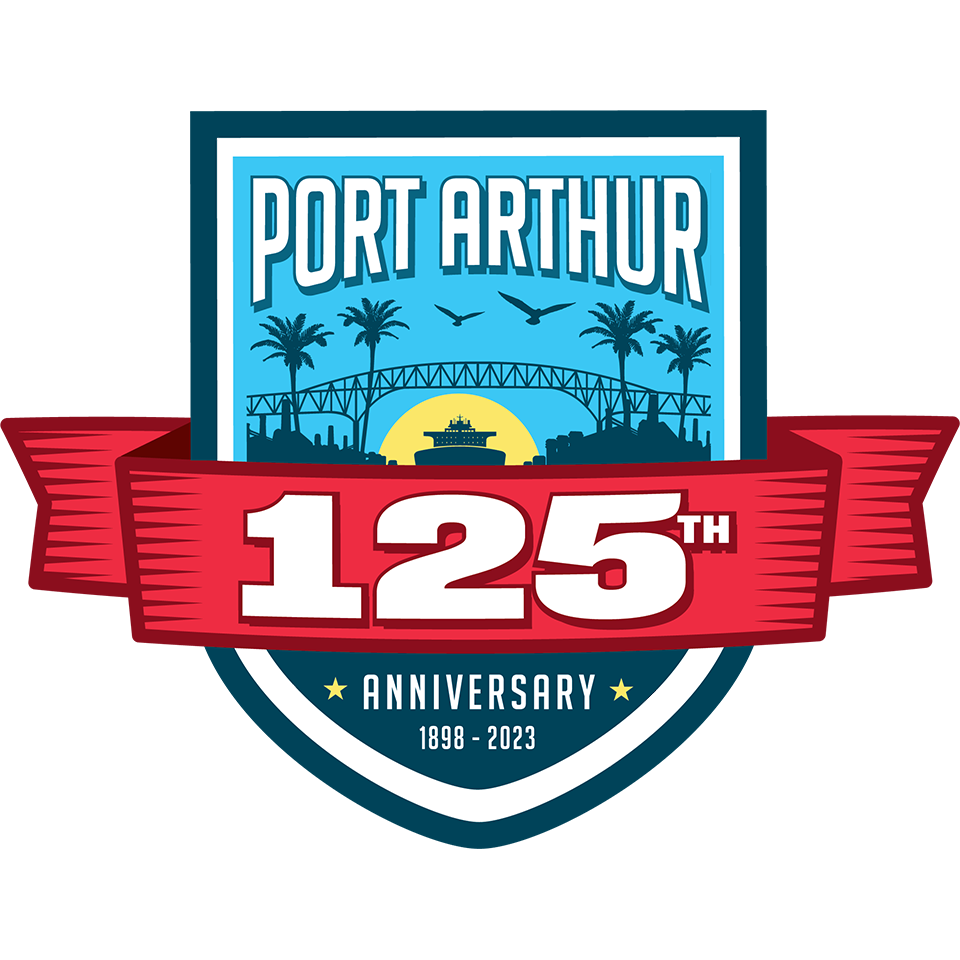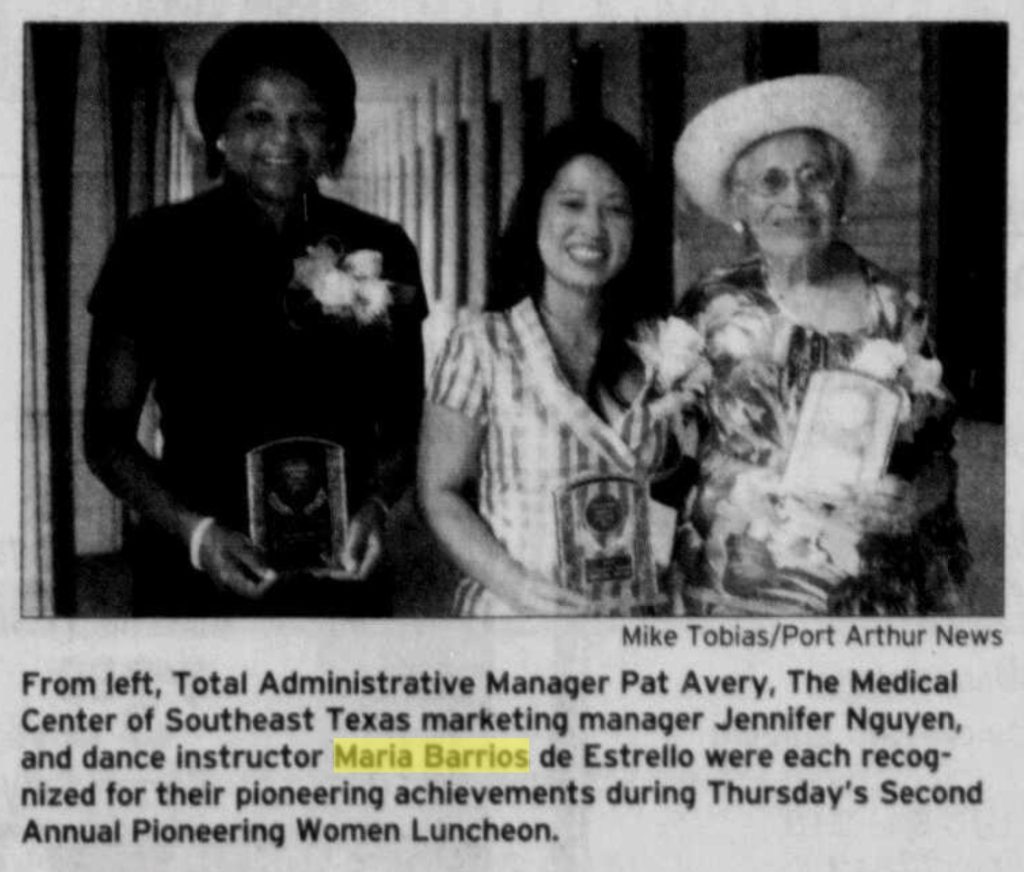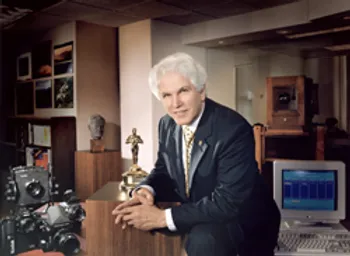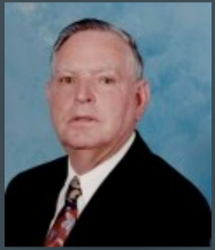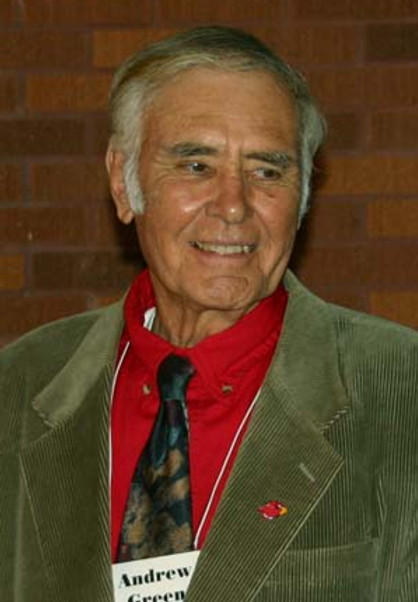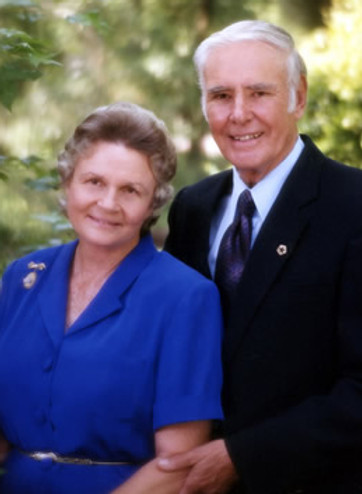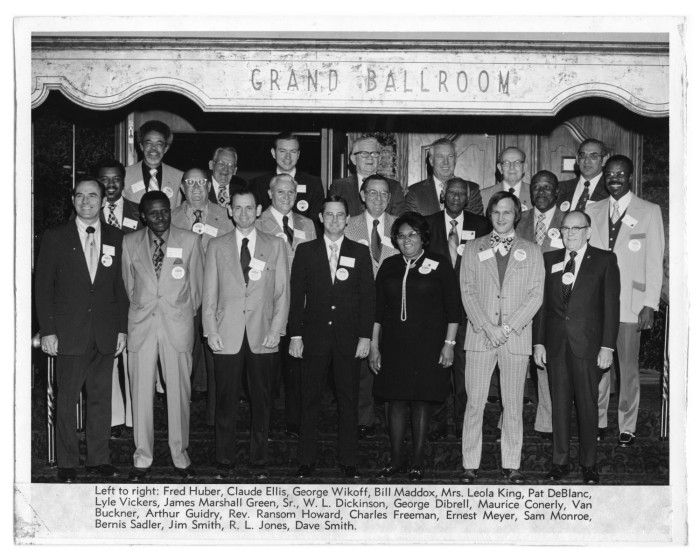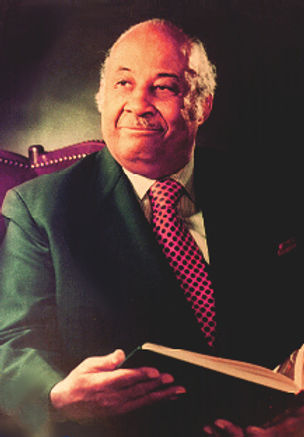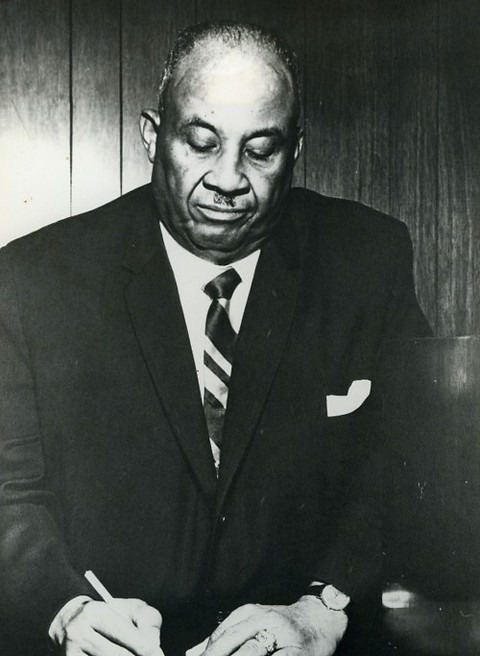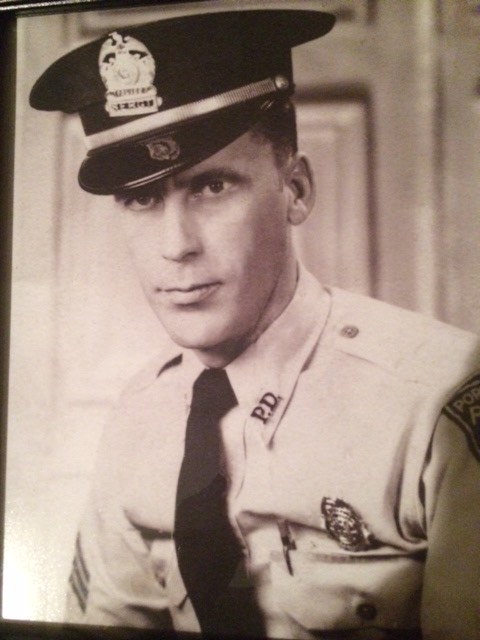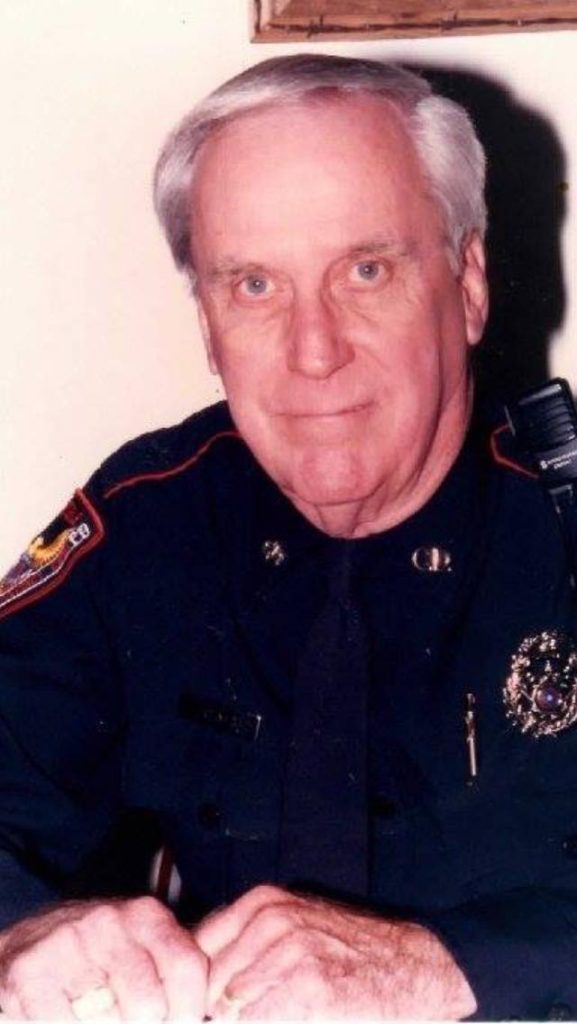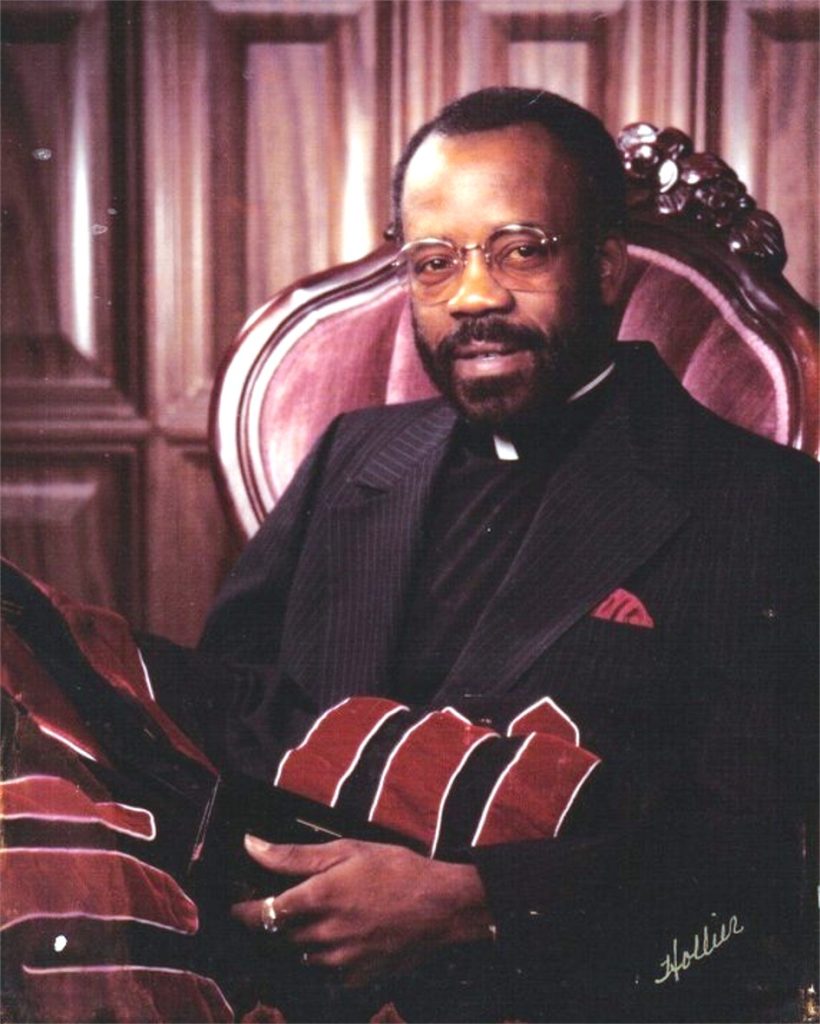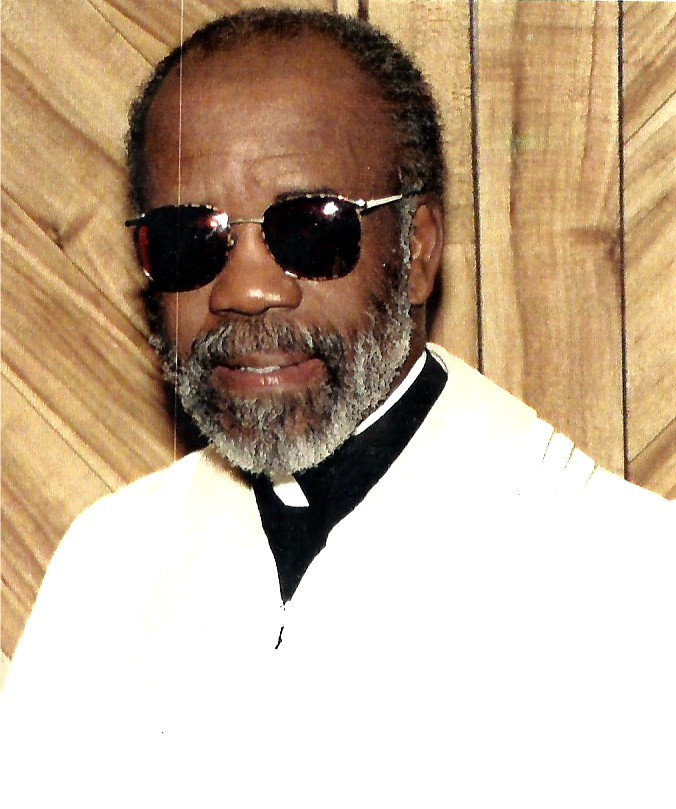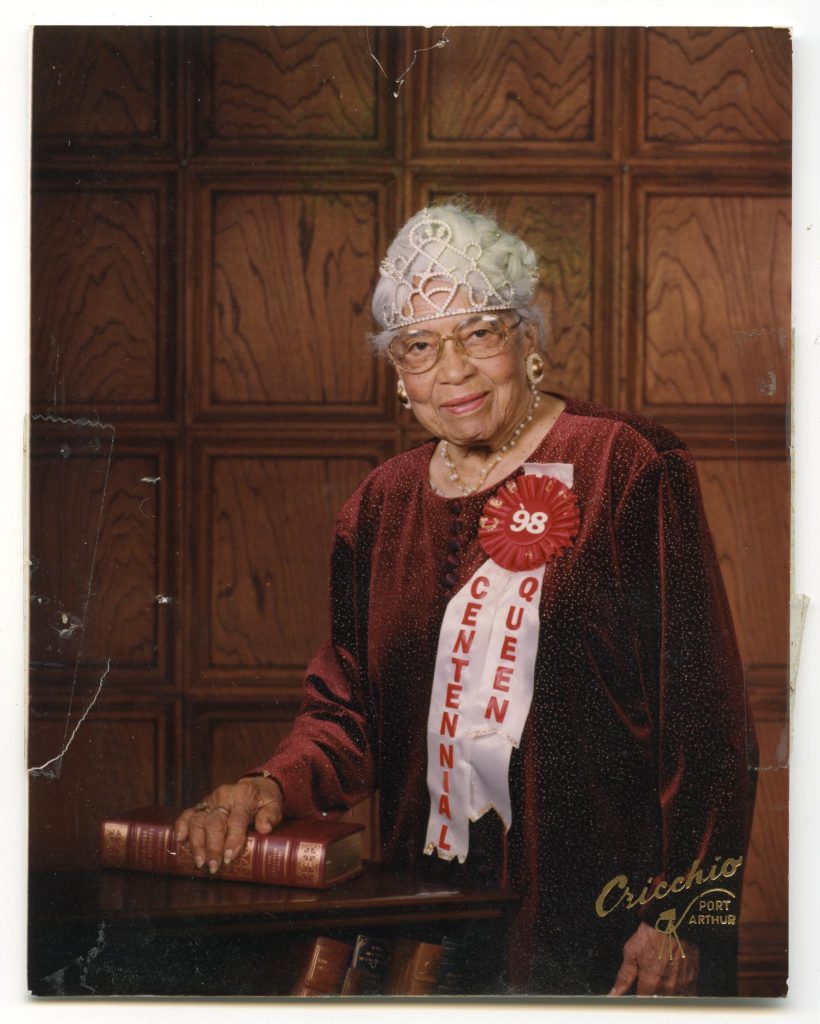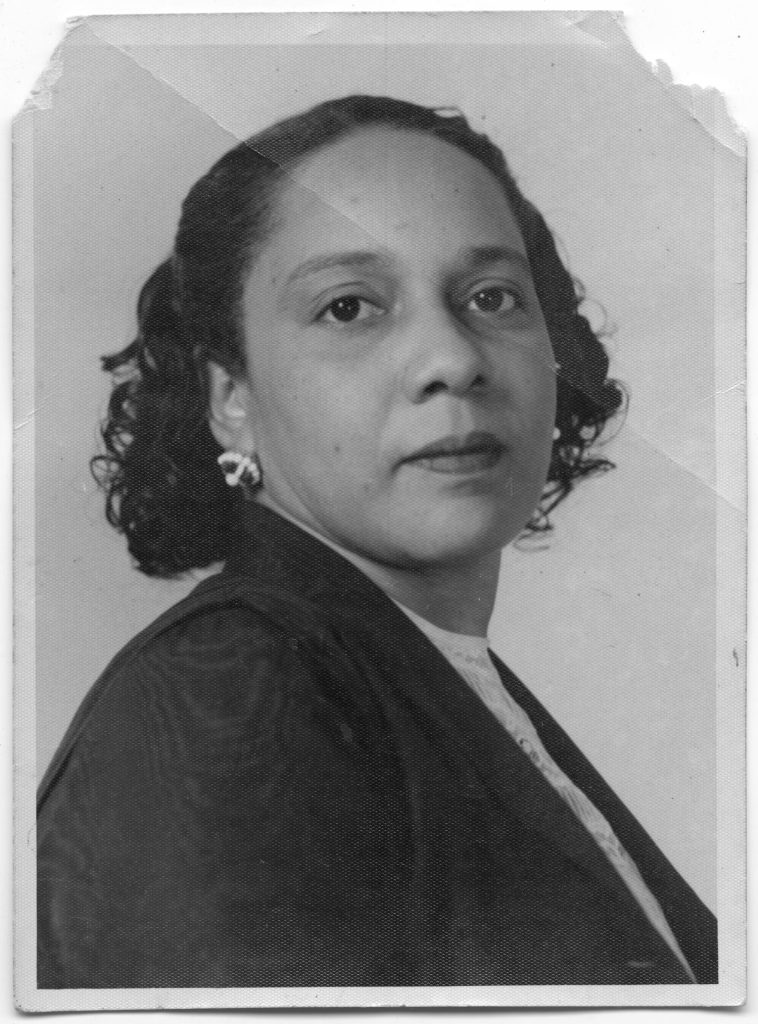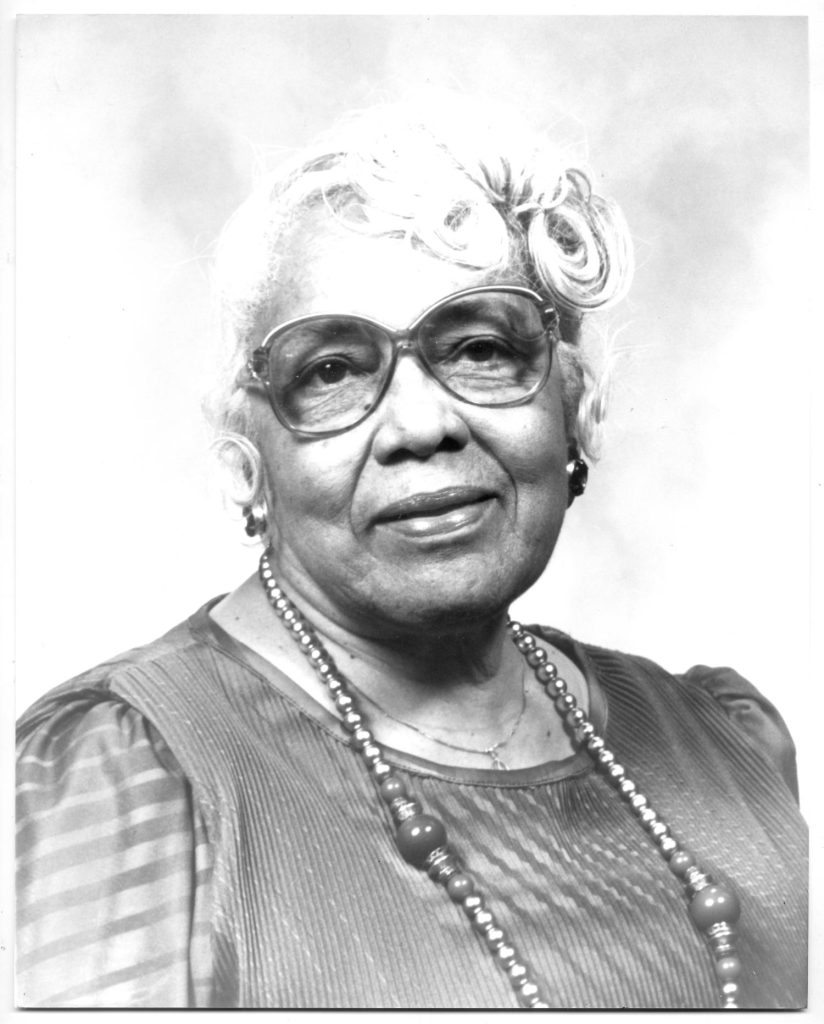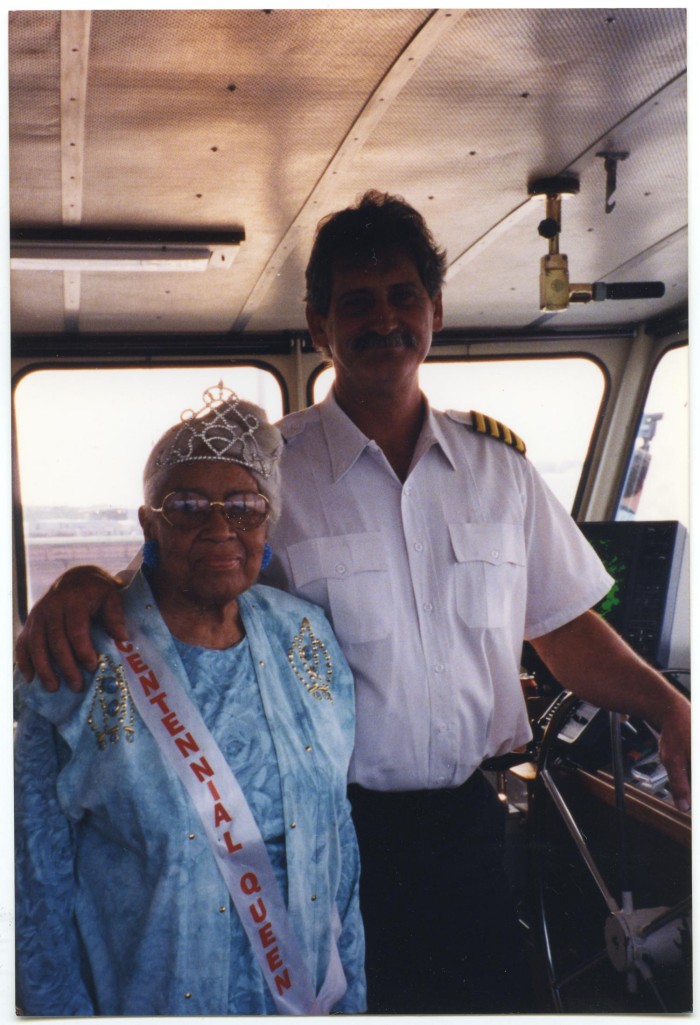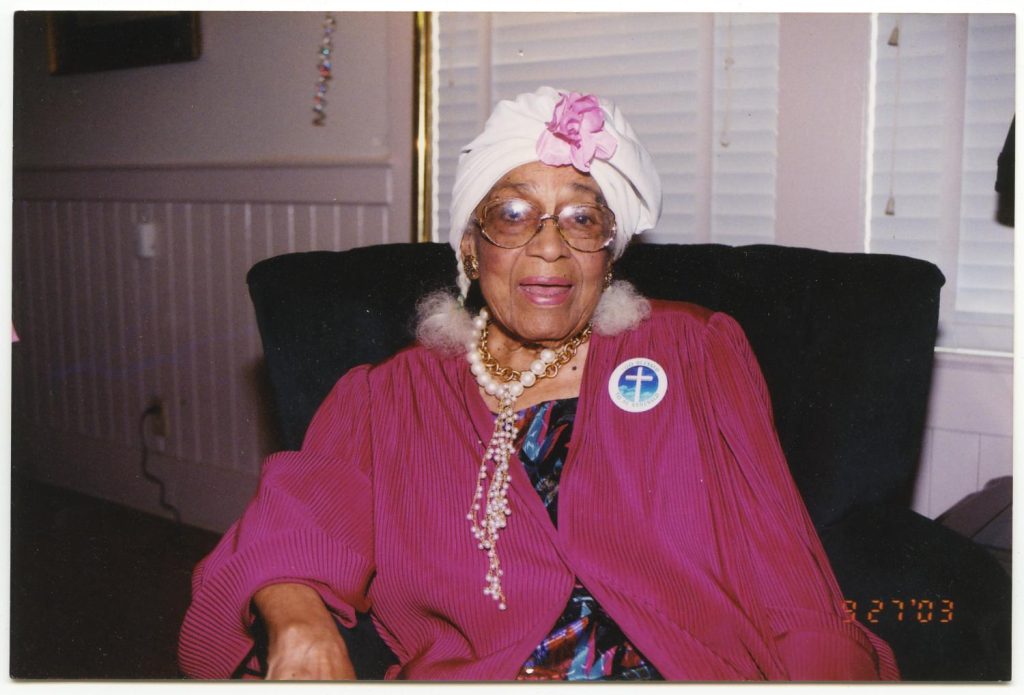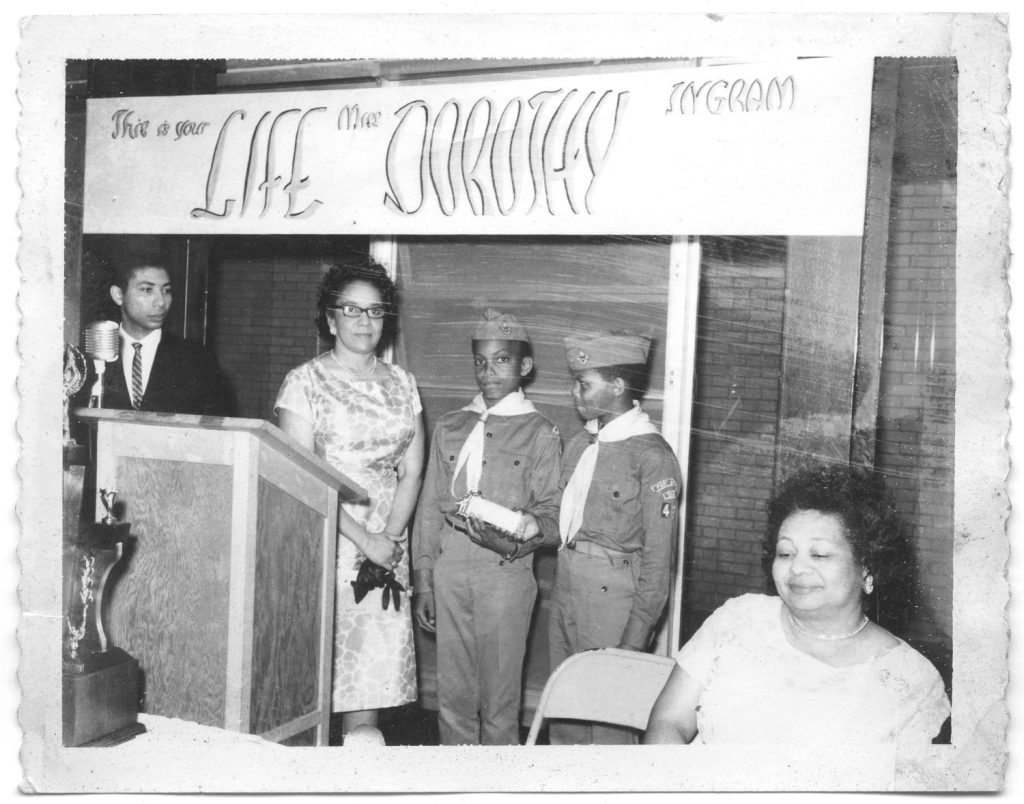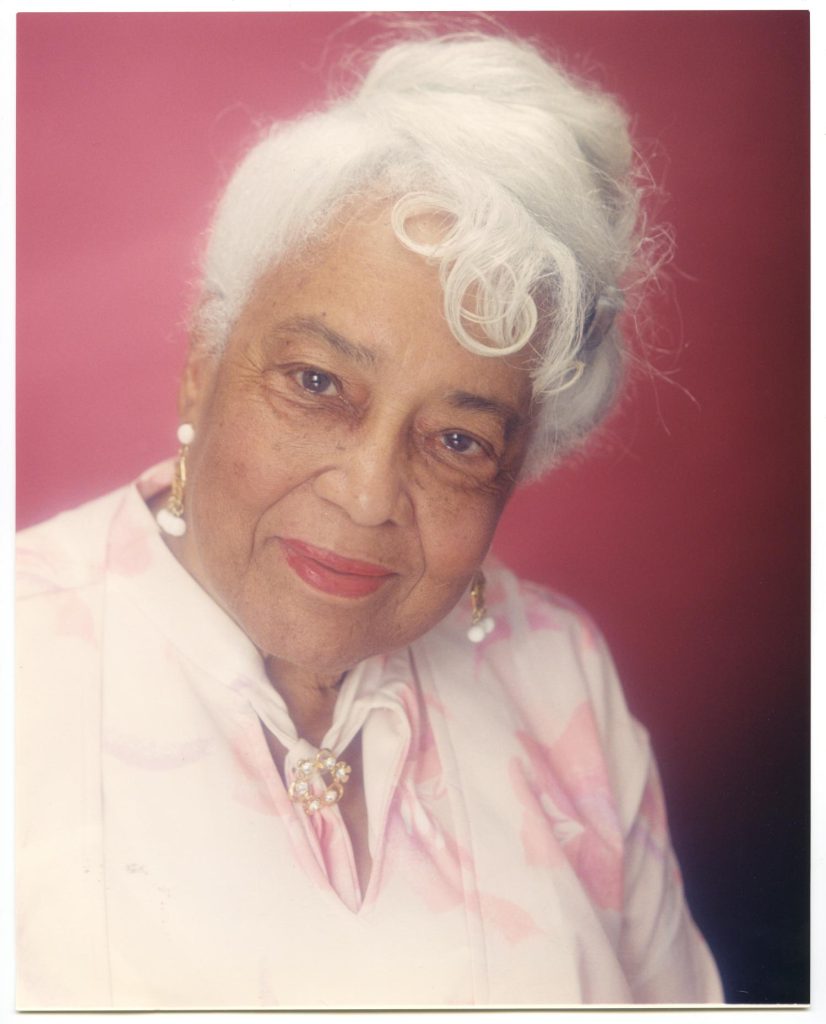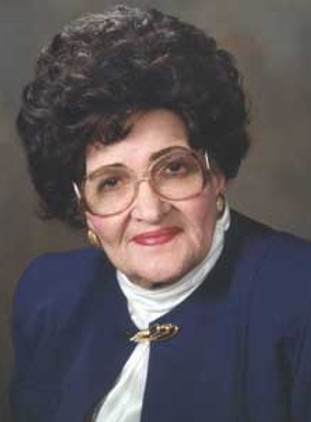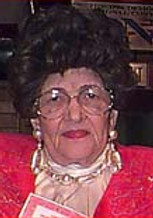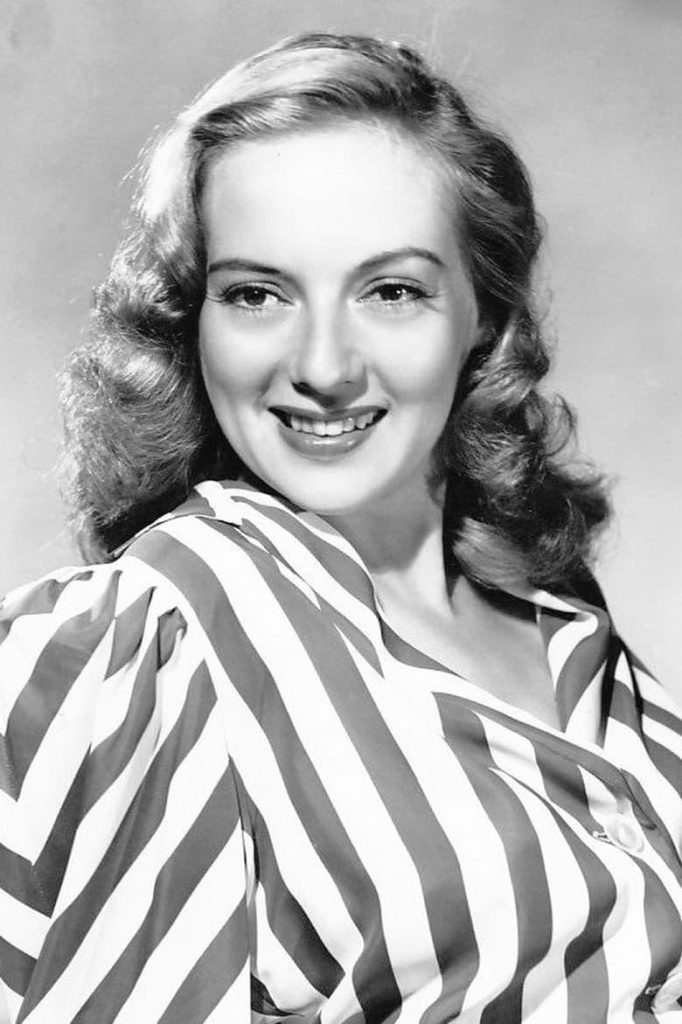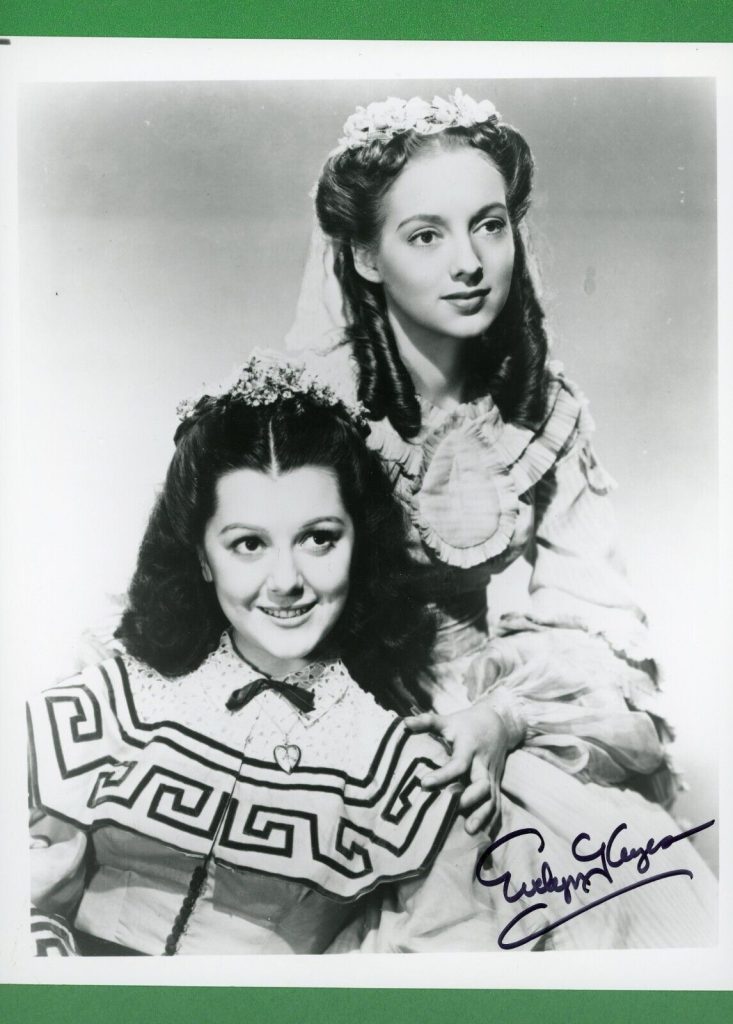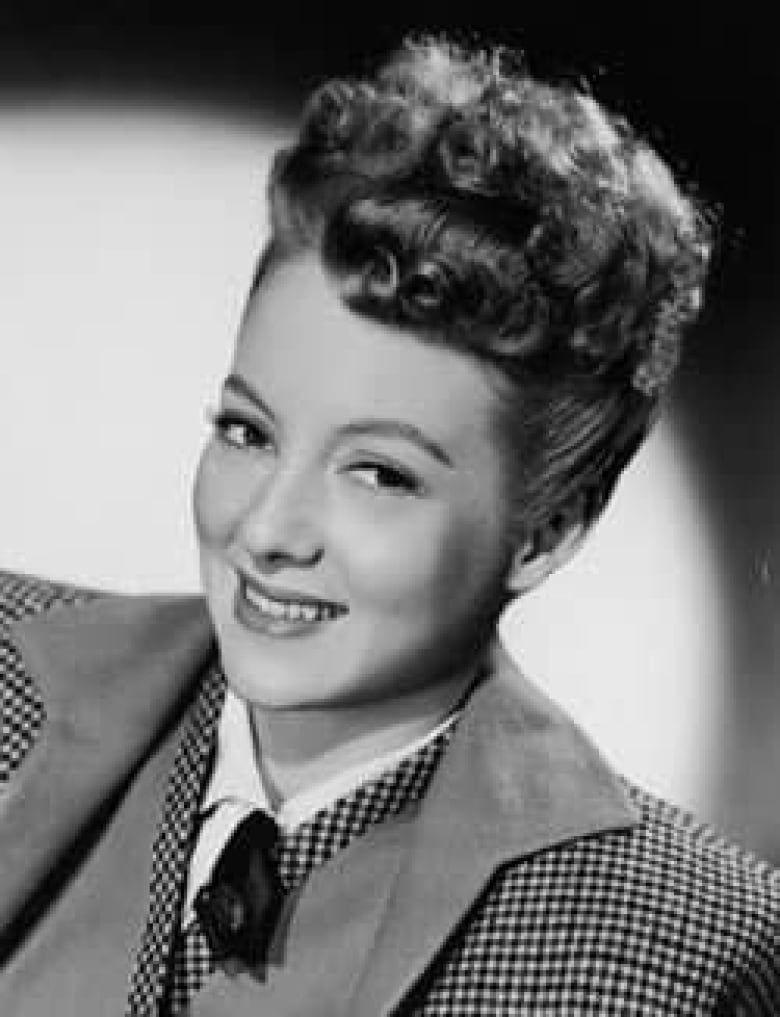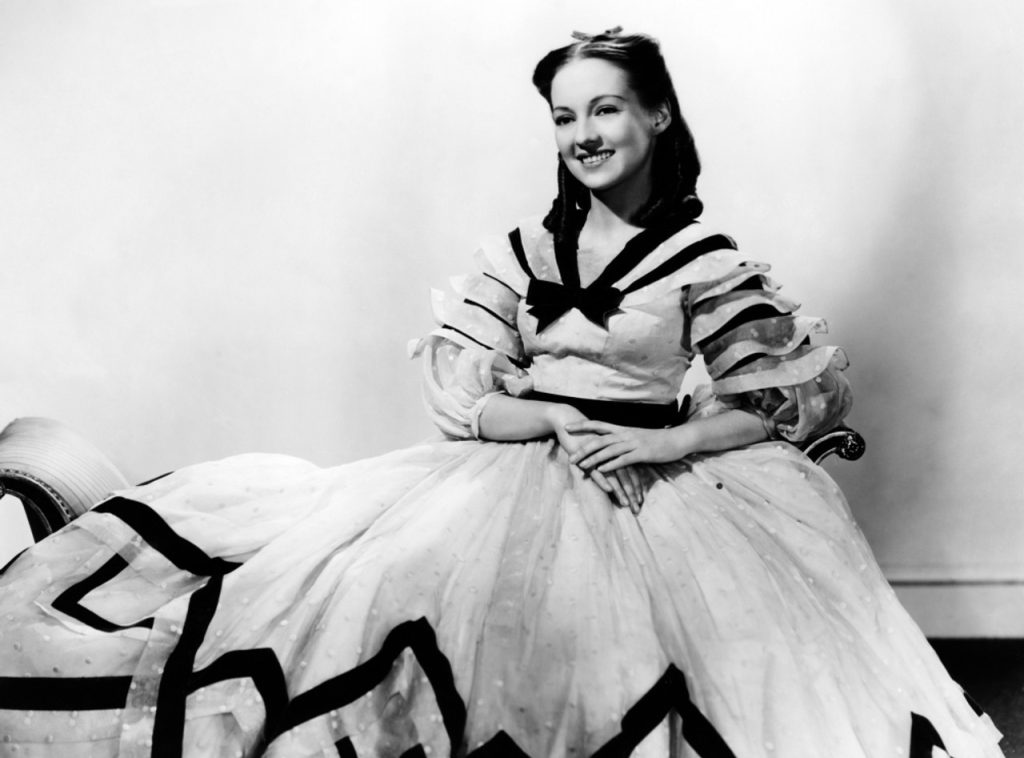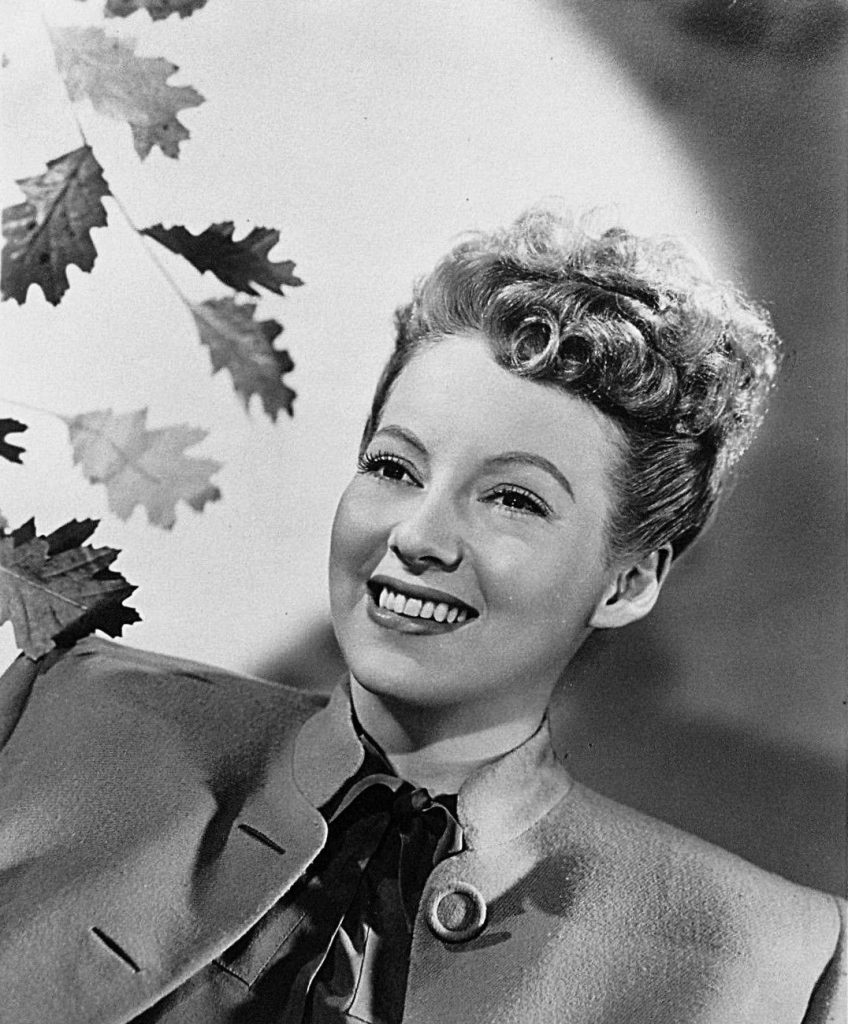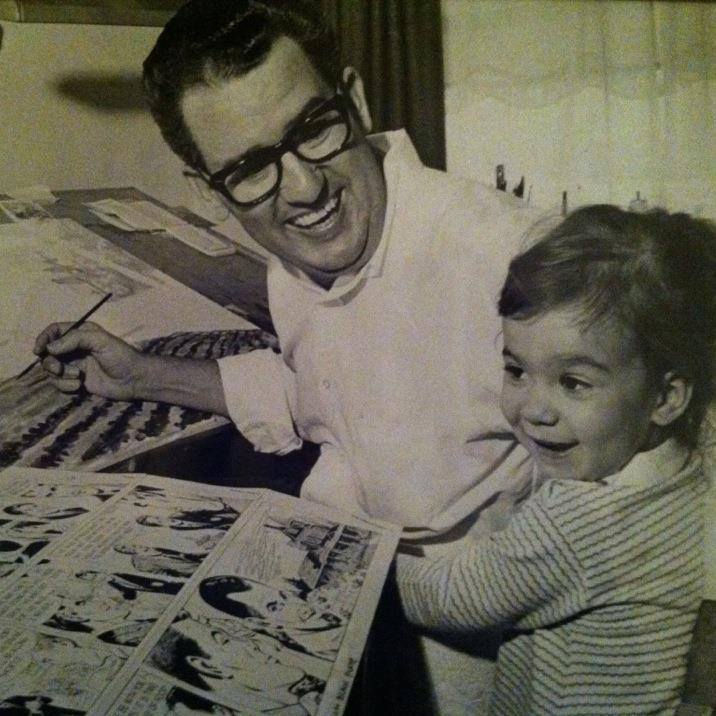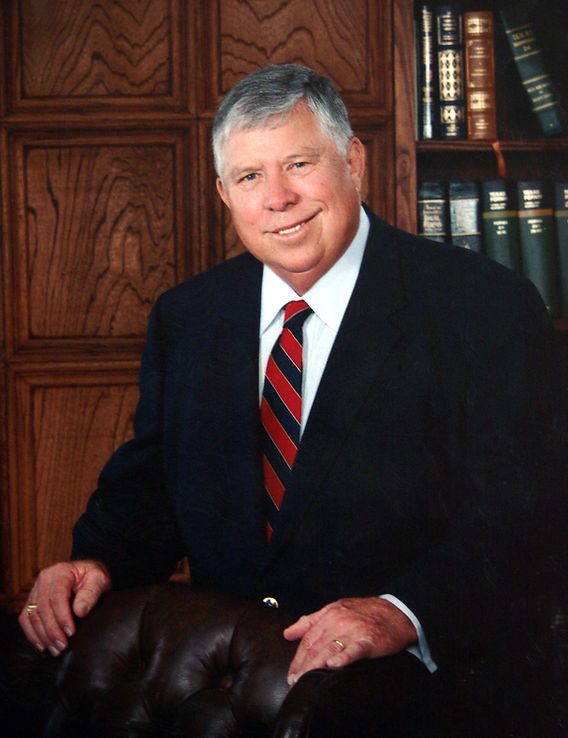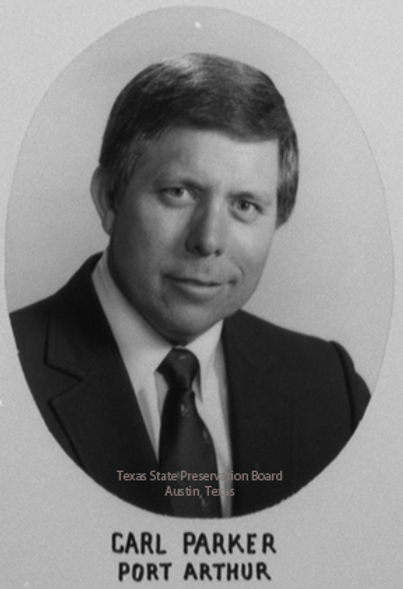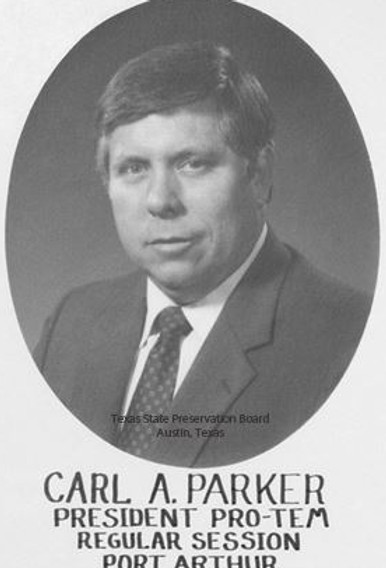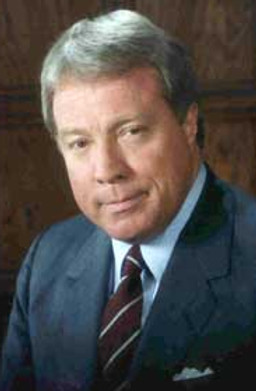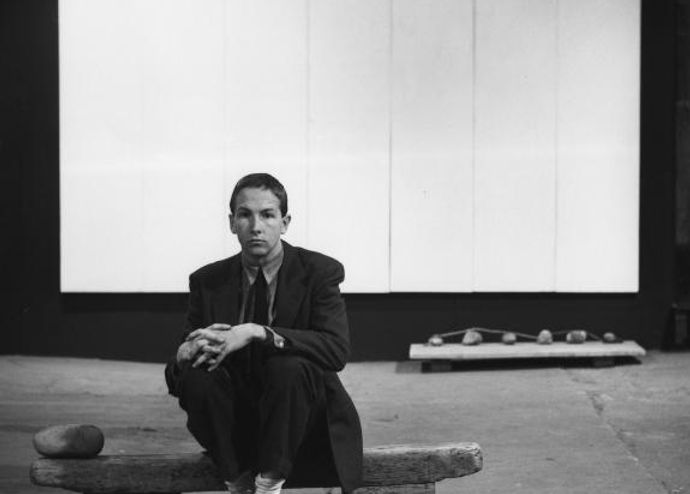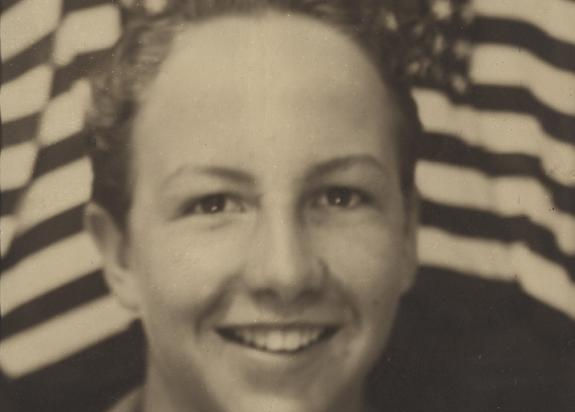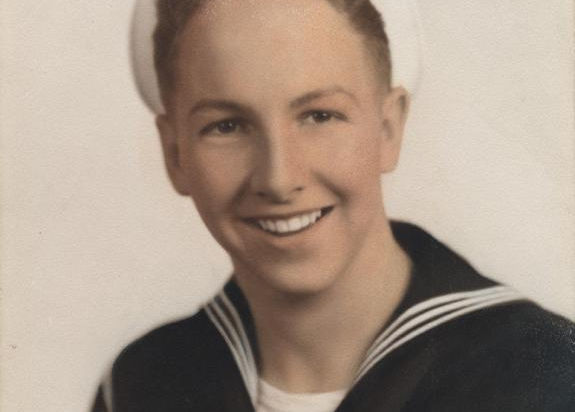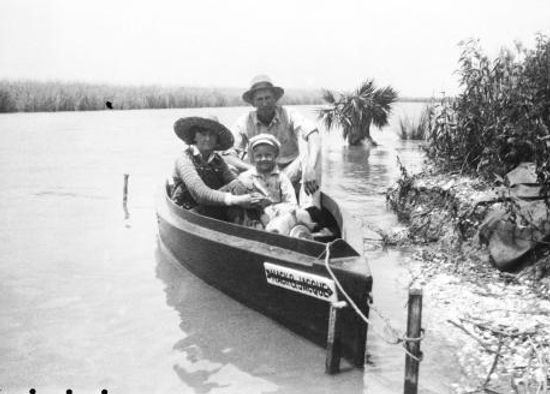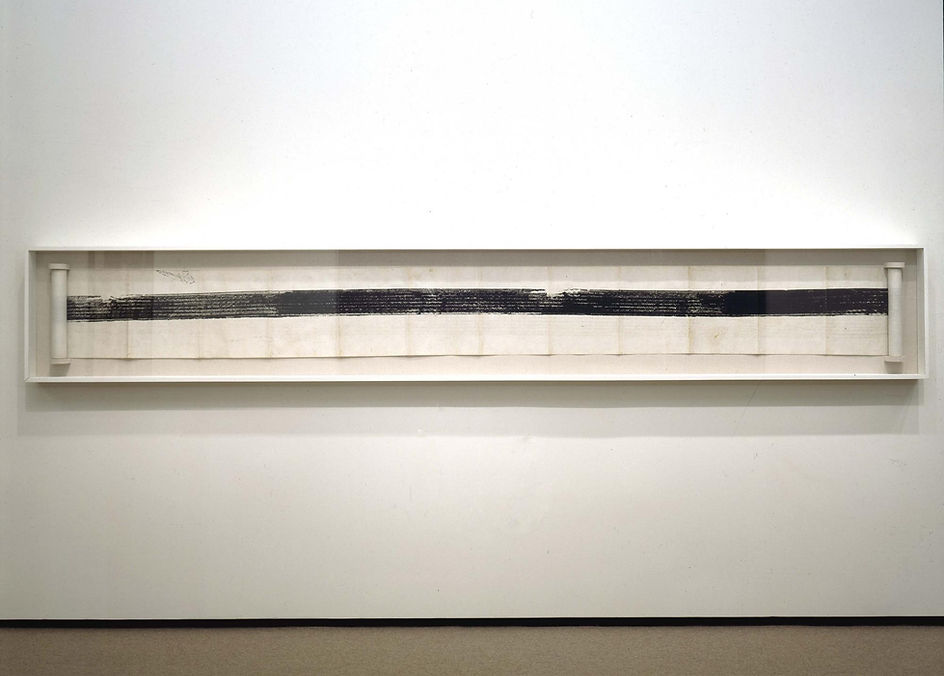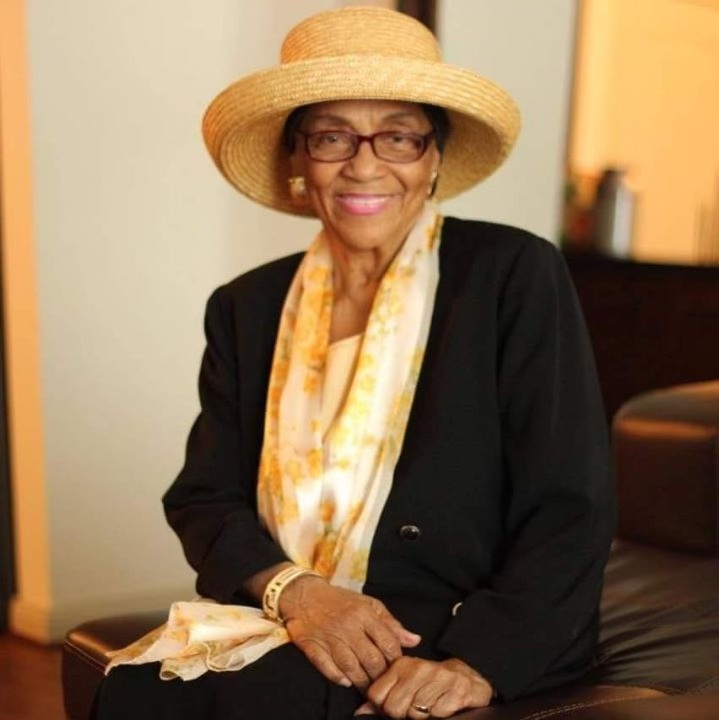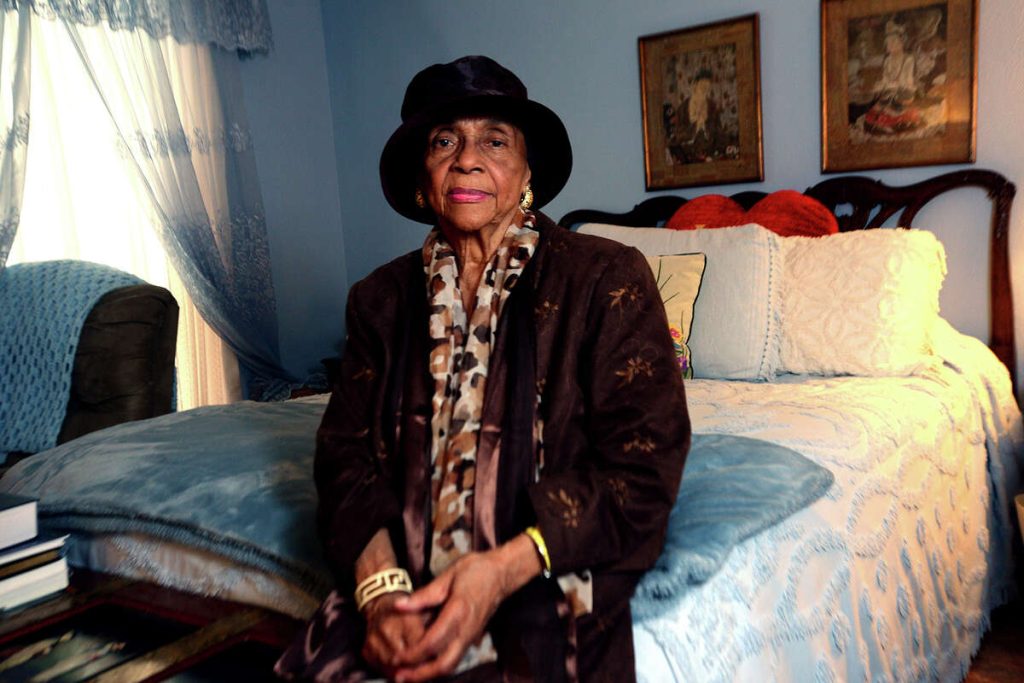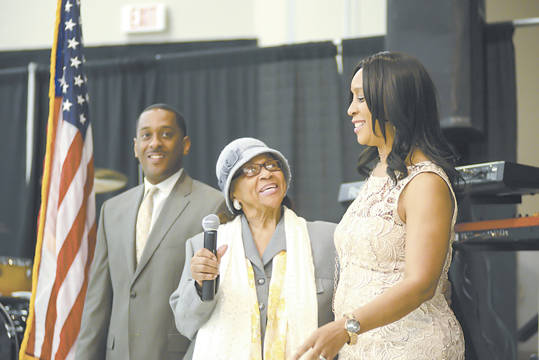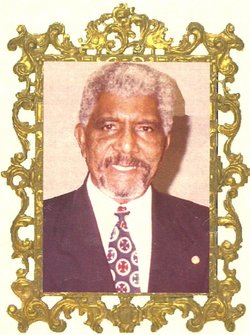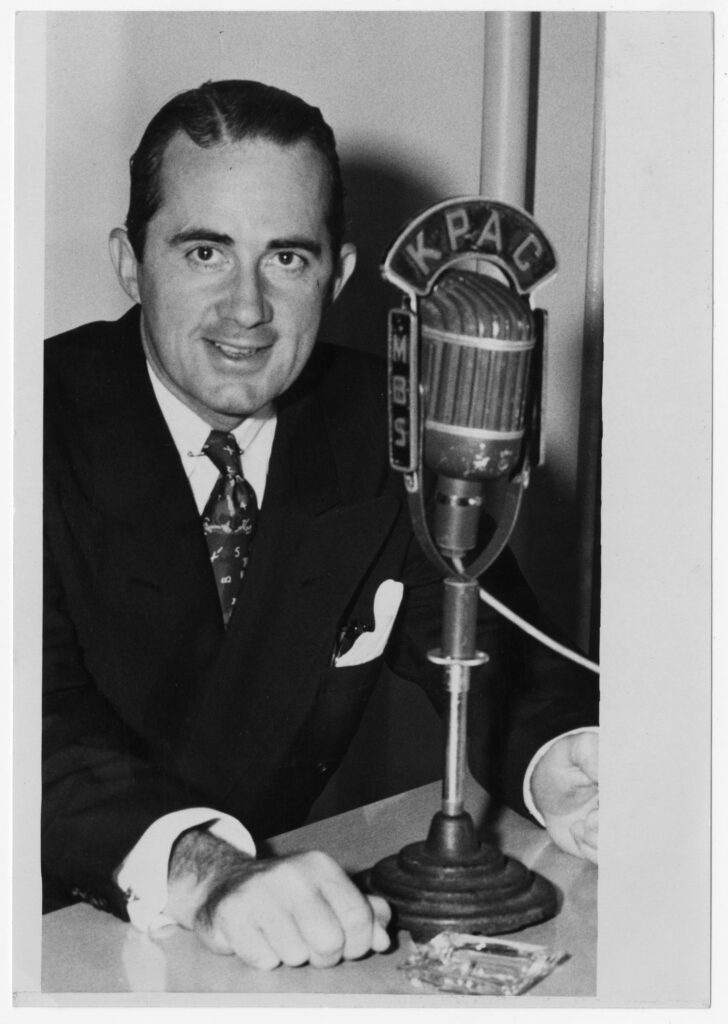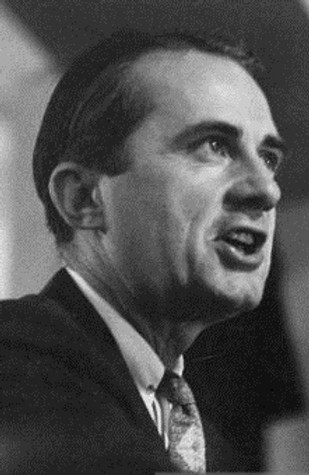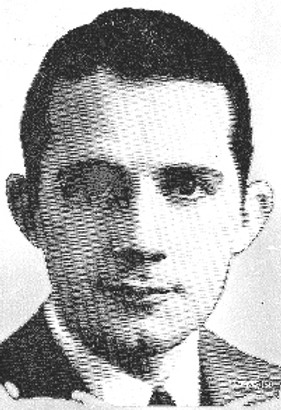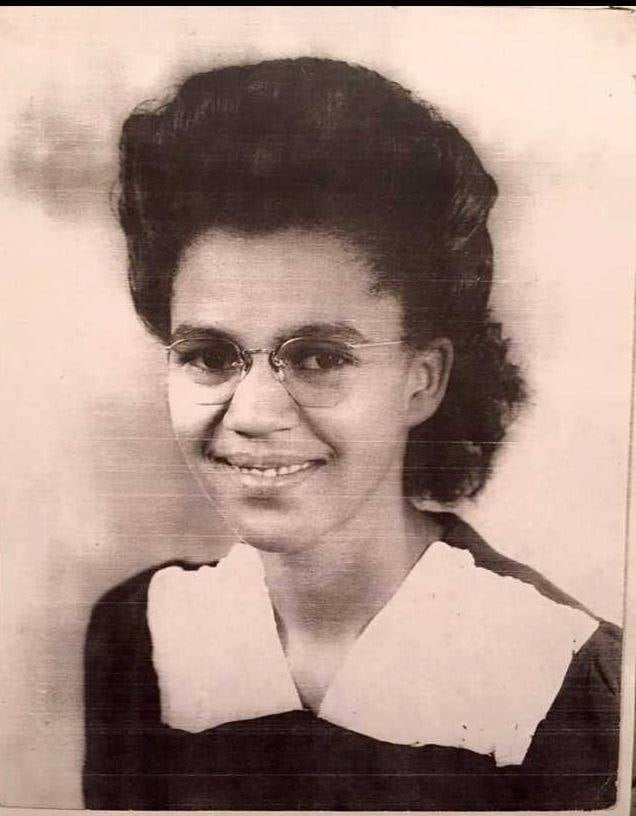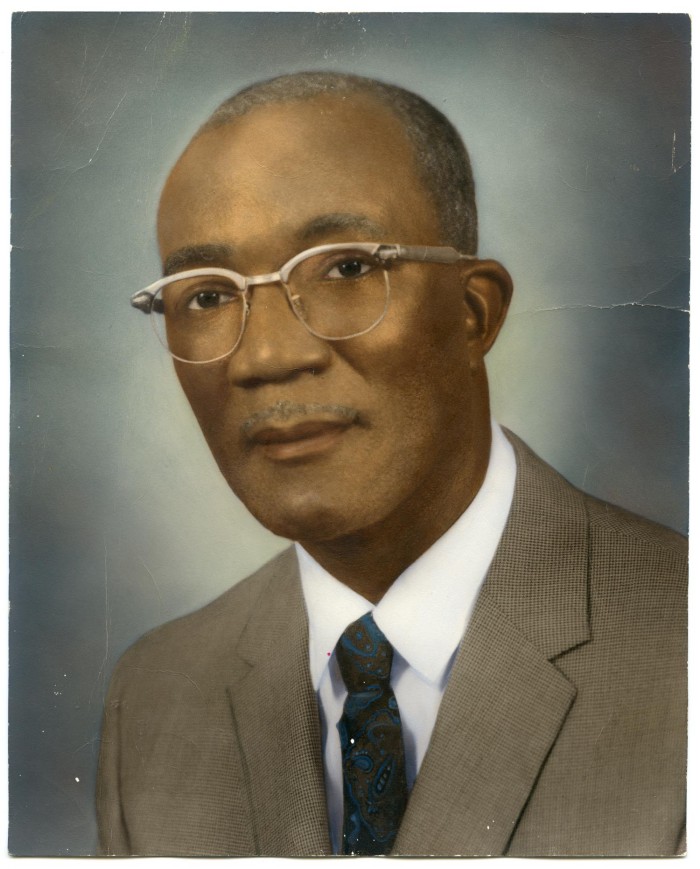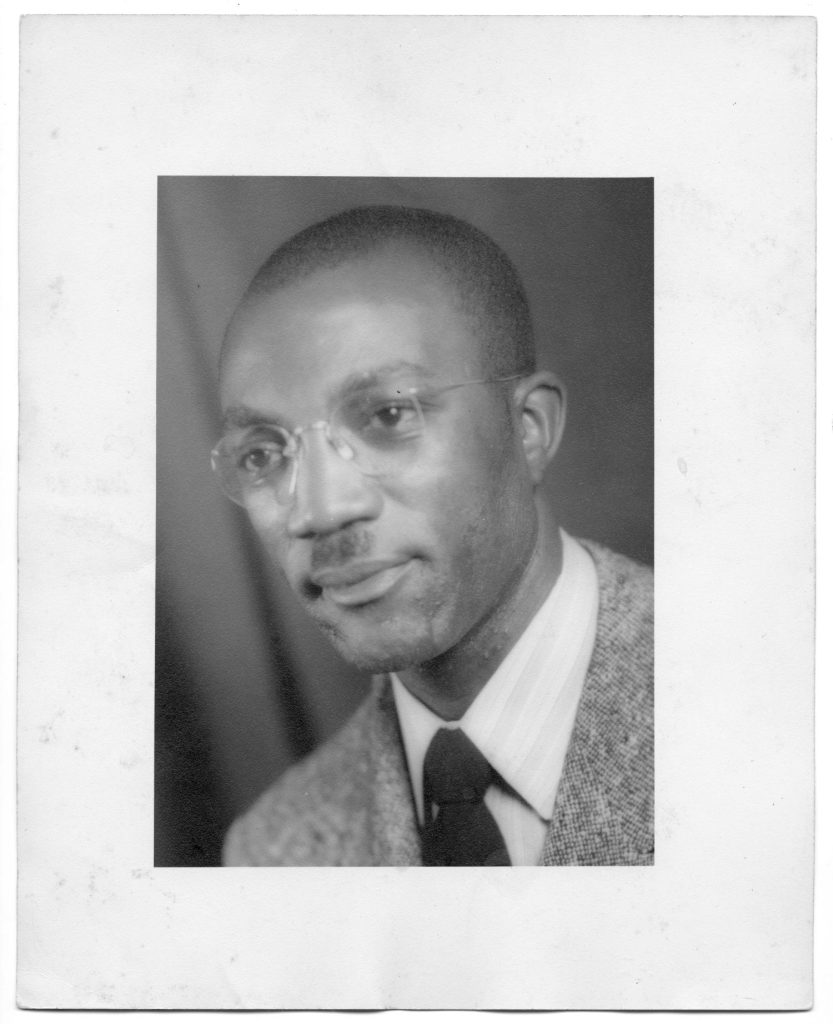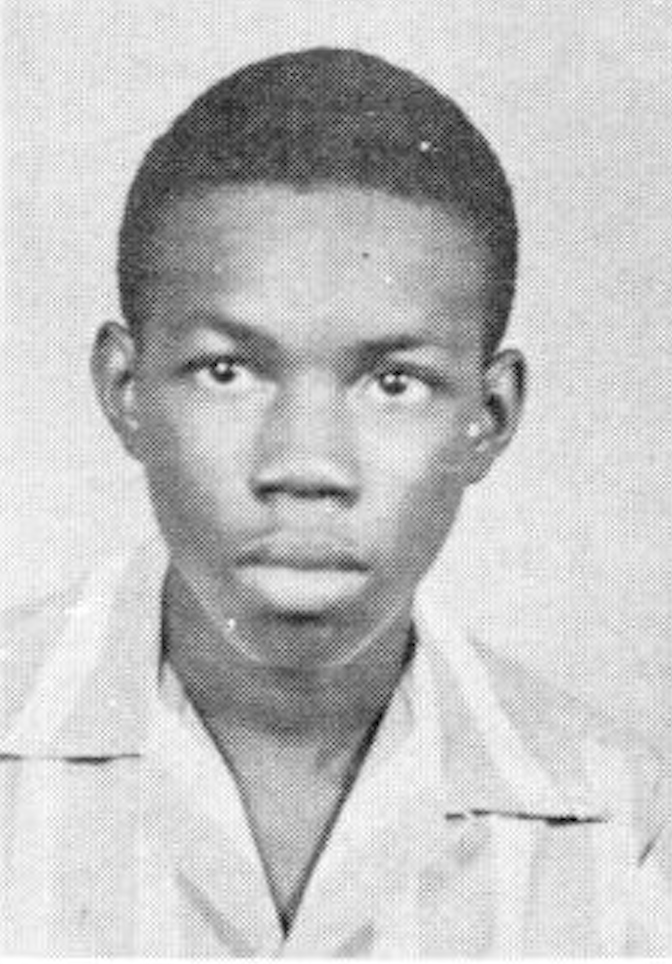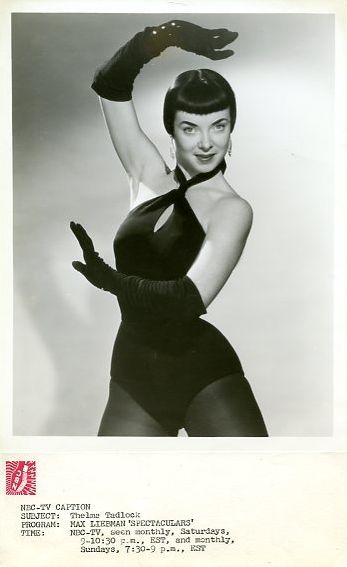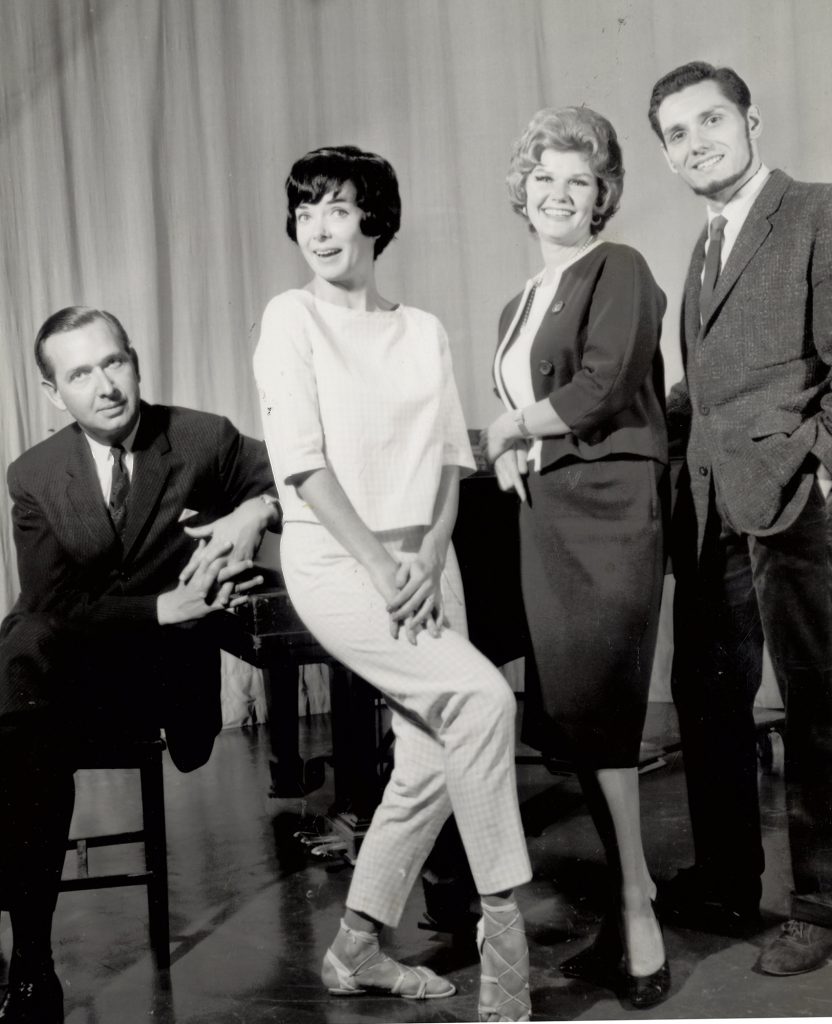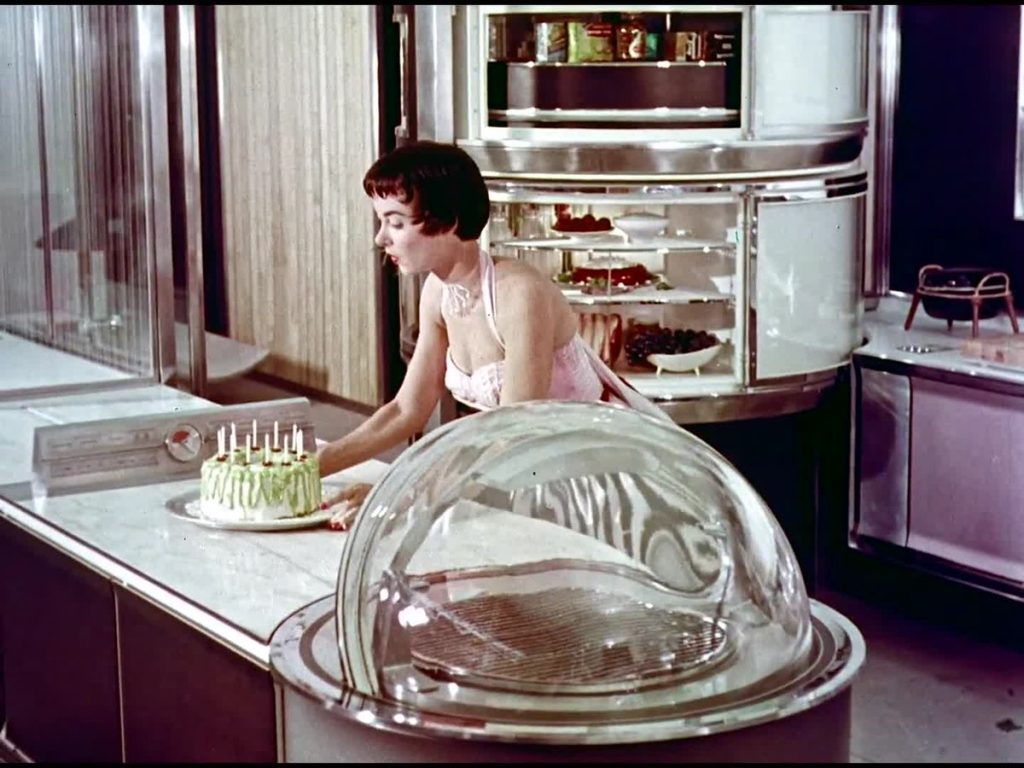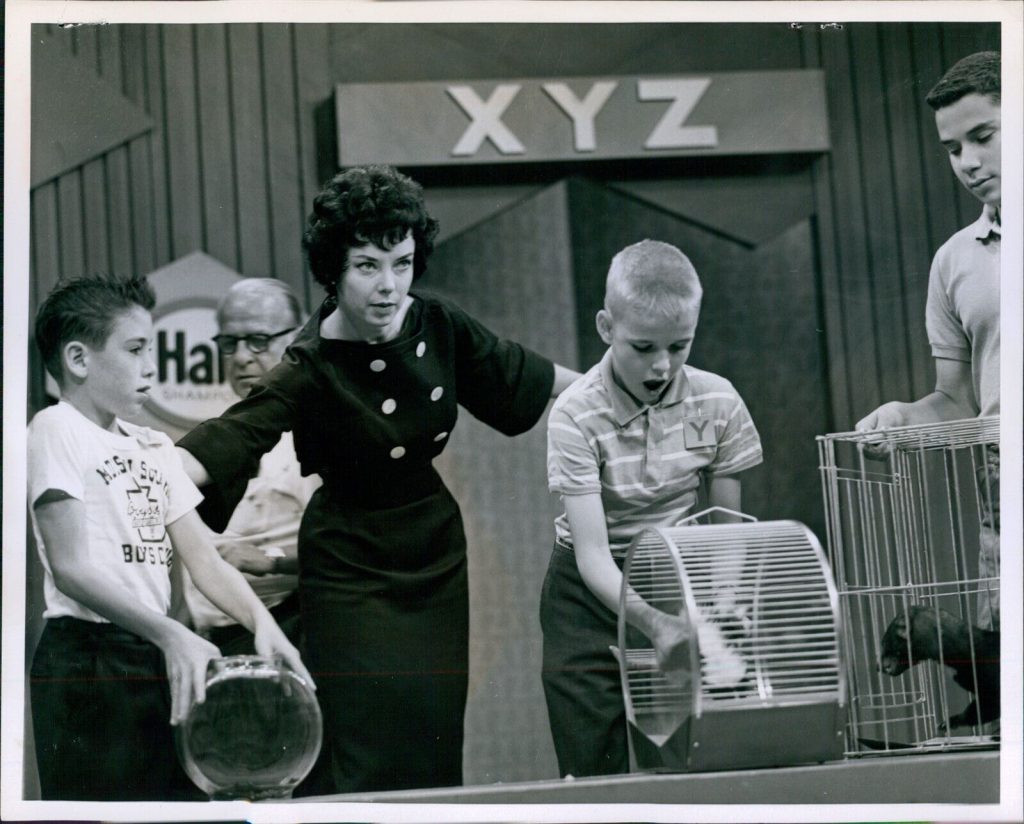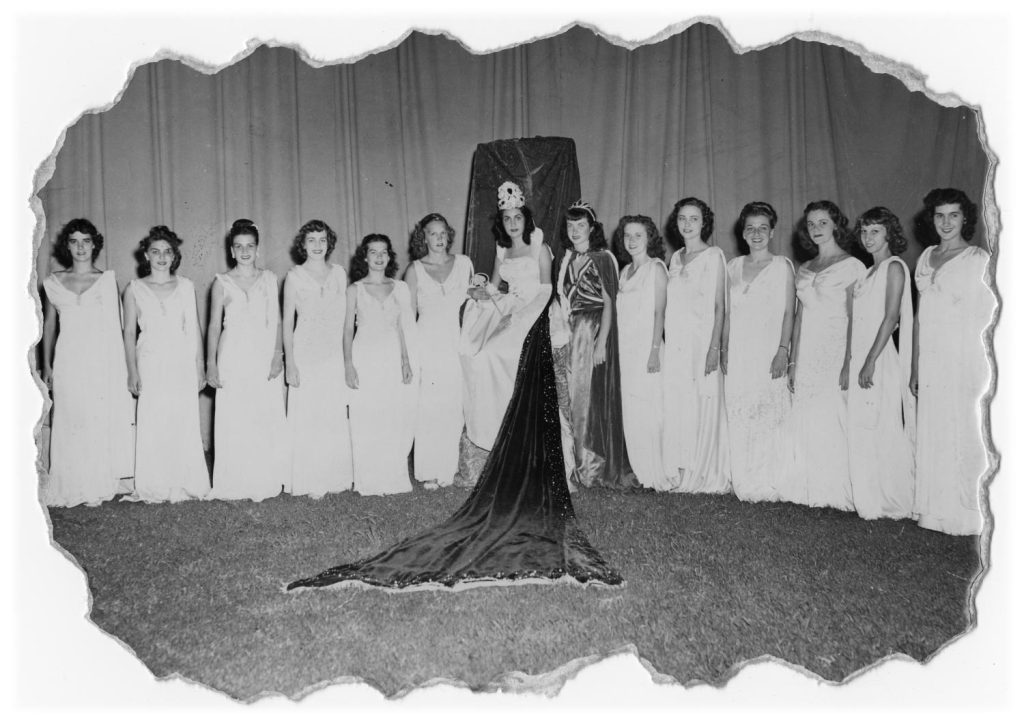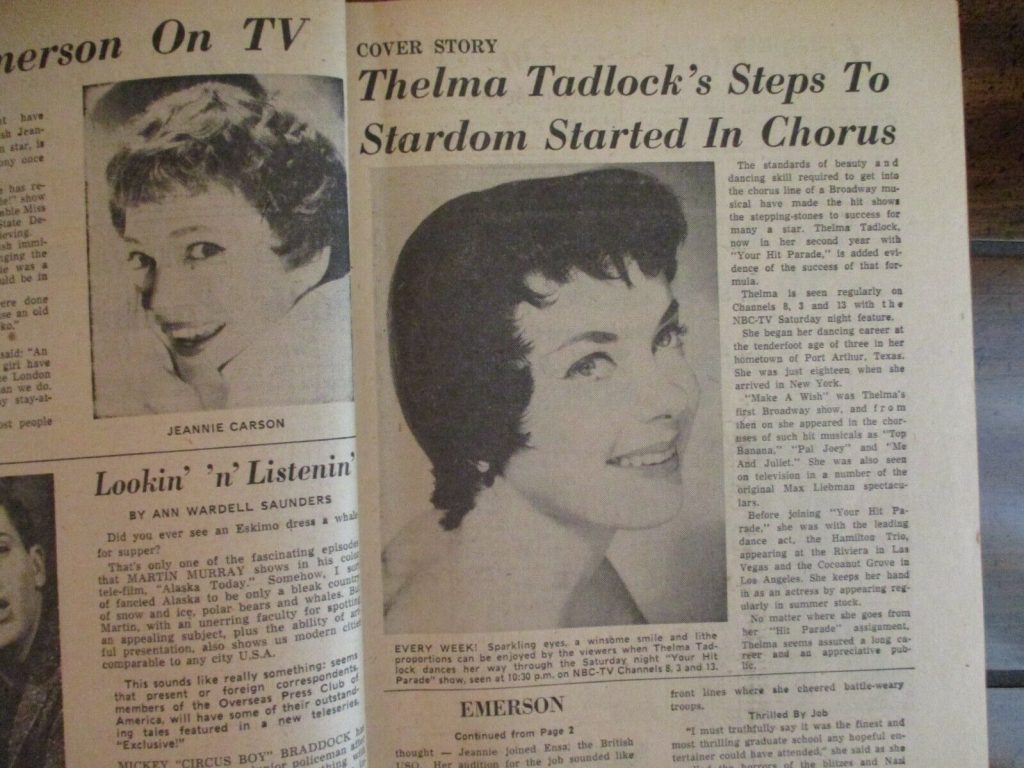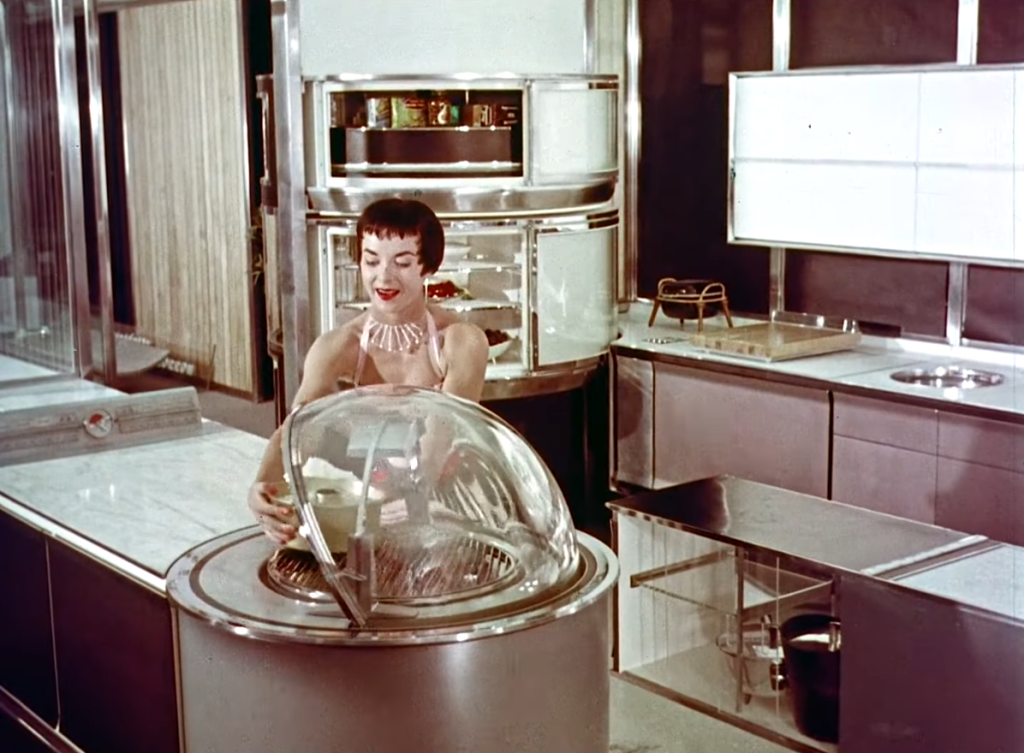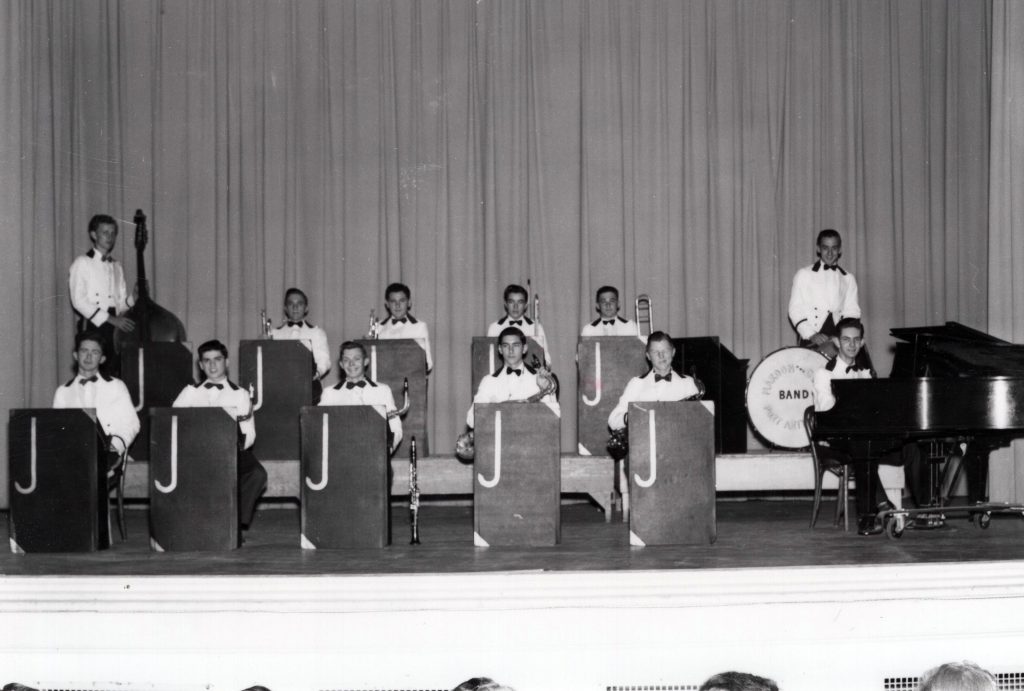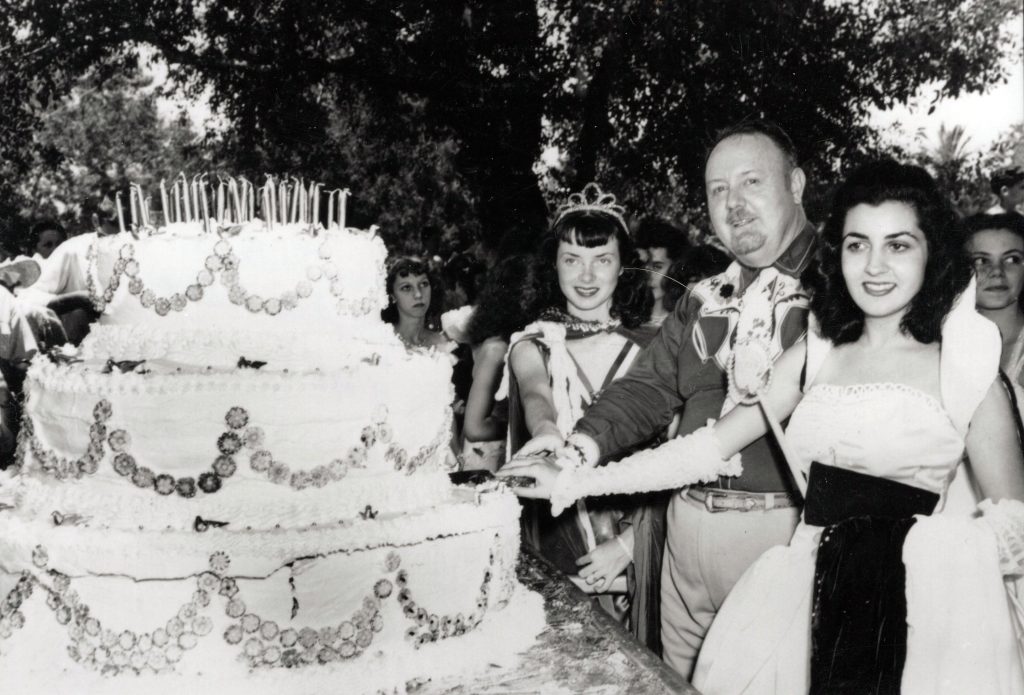Distinguished Port Arthurans
PORT ARTHUR, TEXAS
Click a link below to read about Illustrious Port Arthurans
notable resident: Lucian adams
A Hero Under Fire in WWII
Staff Sergeant Lucian Adams graduated from Port Arthur High School in 1943 in the middle of WWII.
Like most young men of his era, he immediately enlisted in the army. Adams received the Congressional Medal of Honor for his actions during WWII near St. Die, France, on October 28, 1944, when he single-handedly knocked out the three machine gun emplacements which were destroying supply lines between several U.S. Army companies in the area.
To honor Adams for his achievements, Aurora Park in Port Arthur was renamed Lucian Adams Field, and a monument was erected in 1974. In 1986 a section of 61st Street in Port Arthur was also renamed in his honor.
n 2011 Port Arthur Independent School District honored Staff Sergeant Lucian Adams by naming a local elementary school for him.
Besides the Medal of Honor, Adams received the Bronze Star and the Purple Heart for gallantry in action during the Casino campaign in Italy.
After the war, Adams worked for 40 years with the Veterans Administration in various offices, mostly in San Antonio. He retired in 1986 and resided in San Antonio until his death in 2003.
The Congressional Medal of Honor Society lists the citation as follows:
For conspicuous gallantry and intrepidity at risk of his life above and beyond the call of duty on 28 October 1944, near St. Die, France. When his company was stopped in its effort to drive through the Mortagne Forest to reopen the supply line to the isolated third battalion, SSgt. Adams braved the concentrated fire of machine guns in a lone assault on a force of German troops. Although his company had progressed less than 10 yards and had lost three killed and six wounded, SSgt. Adams charged forward dodging from tree to tree firing a borrowed BAR from the hip. Despite intense machine-gun fire which the enemy directed at him and rifle grenades which struck the trees over his head, showering him with broken twigs and branches, SSgt. Adams made his way to within 10 yards of the closest machine gun and killed the gunner with a hand grenade. An enemy soldier threw hand grenades at him from a position only 10 yards away; however, SSgt. Adams dispatched him with a single burst of BAR fire. Charging into the vortex of the enemy fire, he killed another machine gunner at 15 yards’ range with a hand grenade and forced the surrender of two supporting infantrymen. Although the remainder of the German group concentrated the full force of its automatic-weapon fire in a desperate effort to knock him out, he proceeded through the woods to find and exterminate five more of the enemy. Finally, when the third German machine gun opened up on him at a range of 20 yards, SSgt. Adams killed the gunner with BAR fire. In the course of the action, he personally killed nine Germans, eliminated three enemy machine guns, vanquished a specialized force which was armed with automatic weapons, and grenade launchers, cleared the woods of hostile elements and reopened the severed supply lines to the assault companies of his battalion.
Lucian Adams is enshrined as member of the Museum of the Gulf Coast, Notable People Hall of Fame.
notable resident: G.W. bailey
From PA to M*A*S*H to Police Academy
G.W. Bailey attended Thomas Jefferson High School in Port Arthur with both Janis Joplin and Jimmy Johnson. He also attended Lamar University in Beaumont, eventually transferring to Texas Tech in Lubbock. He spent three years at the Lubbock Theatre Center as Artistic Director of the high school workshop program. His wife, June, suggested that he audition for Theater Communications Group, an organization representing repertory companies across the nation. The Chicago audition won him an assignment to the well-known Actor’s Theatre of Louisville, where Bailey spent three seasons honing his craft in a wide range of productions, including Next, Macbeth, The Pirates of Penzance, and That Championship Season.
Later, the challenge of films and television brought Bailey to California, where he soon found himself actively involved as a director. During three seasons at the Old Globe Theatre in San Diego’s National Shakespeare Festival, he appeared as Dogberry in Much Ado About Nothing, Ajax in Troilus and Cressida, Frederick in As You Like It, and Kent in King Lear.
It was while appearing in a production of As You Like It that Bailey auditioned for what turned out to be a recurring role as Staff Sergeant Luther Rizzo in M*A*S*H (TV-Series 1979-83).
He has entertained millions worldwide in television and feature films, including a recurring role (Captain Thaddeus Harris) in the Police Academy movies (1984-1994). He returned to college in 1993 and graduated from Texas State University in San Marcos, Texas, in May 1993, with a Bachelor of Fine Arts, Theatre. For the 1999–2000 school year, he was the Artist-in-Residence.
He appeared in 105 episodes of the television show Major Crimes from 2012 to 2018, reprising his character Detective Lieutenant Louie Provenza from The Closer (2005 – 2012).
Bailey was also the longstanding Executive Director of the Sunshine Kids Foundation, which provides trips and activities for hundreds of young cancer patients annually. He first volunteered with the organization after his goddaughter was diagnosed with leukemia. In 2023, G.W. Bailey was honored with a lifetime membership to the Museum of the Gulf Coast. At this time, Port Arthur Mayor Thurman Bartie presented G. W. with the “Keys to the City” and named January 25 as GW Bailey Day in the City of Port Arthur. He is a member of the Museum of the Gulf Coast, Notable People Hall of Fame.
notable resident: Maria Barrios Estrello
First Mexican-American TJ graduate
The thunderclouds of revolution were on the horizon of Mexico at the beginning of the 20th Century, so many Mexican nationals crossed the border seeking new jobs and a settled life in the newly-incorporated city of Port Arthur.
That wasn’t what attracted Maria Barrios Estrello’s parents to the new city in 1919. While many Mexican immigrants came to work in the new refineries that sprouted after the Spindletop oil boom of 1901, she said her family came in search of a lost family member.
“The rest of the people came here for jobs,” Estrello said in an interview with The Port Arthur News in 1998. “My family came here to find my older brother.”
Estrello said her older brother had run away from their home in the Mexican state of Zacatecas several months before, so her father, Silverio Barrios, took out ads looking for him in Spanish newspapers across the country.
When they found him in Ohio, Estrello’s family came up to meet him in Port Arthur. At that time, people could cross the border for five cents.
Estrello said her family settled on the east side of Port Arthur, not on the west side where the majority of Mexican immigrants lived.
“My neighborhood was a small melting pot,” she said. “We had Mexicans, Jews, Syrians, and Cajuns.”
She said she learned English from her childhood playmates and registered herself for school when she was old enough.
There was never any racial problems, she said, between her and the other students.
During the Great Depression of 1929, Estrello said she and some other Mexican immigrants gathered and distributed food to families in need. They named their organization the Mexican Blue Cross, after the organization in Mexico that also helps those in need.
She went on to become the first Mexican-American graduate from Thomas Jefferson High School in 1934, although the term Mexican-American wasn’t used until decades later.
“We were all classified as white on our driver’s licenses,” she said.
Estrello said she didn’t consider herself the first Mexican-American to graduate from TJ. She just considered herself a person determined to reach a goal.
notable resident: Bob Bowers
Building the Foundation of Port Arthur
Robert “Bob” Alfred Bowers of Port Arthur, Texas was born in Cleburne, Texas on April 10, 1928, and passed away on June 7, 2019, at the age of 91. He was a truly dedicated public servant. For over four decades, he served the citizens of Port Arthur with great distinction and integrity as an administrator and a City Councilman. Bob was a true gentleman to all who knew and met him.
He graduated from Cleburne High School in 1946. After high school, he joined the United States Army, serving from September 1948 to December 1949. Bob had military assignments in Fort Ord, California, Fort Lewis, Washington, and Fairbanks, Alaska. He transferred to the Army Reserves and progressed through the rank of Master Sergeant.
Bob was a proud Texas Aggie. He attended Texas A&M University and graduated in 1954 with a degree in civil engineering. After graduation, he moved to Port Arthur to begin his career for the Texas Highway Department as an engineer designing and constructing highway facilities. He received a second lieutenant commission while serving with the 476th Engineer Construction Battalion in Port Arthur. He retired at the rank of Lieutenant Colonel from the Army Reserves.
In 1955, Bob married Angeline Grado and they had two children, David Bowers and Sarah Bowers Weeks, and one grandson Seth Carter Weeks.
Among Bob’s peers, he earned much respect and admiration. Bob has been described as an “engineer’s engineer.” He helped shape much of the new growth in Port Arthur throughout his career. He was a visionary, patient, and dedicated to making Port Arthur a better place to live and work.
Bob worked as the Public Works Director in Groves Texas for 18 months, after which time he was invited to apply for the Director of Public Works for the City of Port Arthur. His 31-year tenure at the city of Port Arthur included serving as City Engineer, Director of Public Works, Director of Public Services, Assistant City Manager, and Deputy City Manager. In 1994, Mr. Bowers was elected as District Six City Council Member. He was re-elected for two additional terms. In recognition of his many accomplishments to the Port Arthur City Council, on June 23, 2003, the Port Arthur Civic Center was named the Port Arthur “Bob Bowers” Civic Center.
Bowers received the Texas Department of Transportation’s highest honor, “The Road Hand Award,” which is reserved for a small number of people recognized for driving the state forward in transportation. Awardees have contributed in a major way to transportation in their communities and the state. Bowers, along with another transportation leader, Art Spencer, took personal responsibility for educating stakeholders, including public officials, along the I-69 corridor from Southeast Texas into the adjacent state of Arkansas as to the importance of that widening project. Their efforts were successful when all public jurisdictions supported the project. Because of their tireless efforts, the public now has four-lane highway access on that major stretch of Highway 69.
In April 2003, the Texas Section of the American Society of Civil Engineers honored Bowers with the “Service to People Award” in Corpus Christi.
Bowers was a man of strong faith and conviction. As a member of the First Christian Church of Port Arthur. He served his church in many areas of leadership. He became an elder in 1973 and served for many faithful years. He served as a teacher for the Grace Foote Crusaders Sunday school class.
Bowers was honored as the 2002 Sunday School Teacher of the year. He facilitated the organization of the Pleas and Audrey Benson Scholarship Fund for High School Graduates of First Christian Church. He served as a deacon, Stewardship-Finance Committee chairperson, Landscape Committee, and many other committees. His generosity, caring, and love of his church have been instrumental in the growth and nurture First Christian Church of Port Arthur.
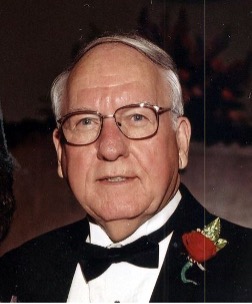
notable resident: Frank Cricchio
Leader, Innovator in Photography
Frank Cricchio is widely known as a leader and innovator in the photographic profession and in 1998 became the first and only photographer to receive over one thousand merits from the Professional Photographers of America. As a child, his family could not afford for him to attend photography school, but saved money so that he could purchase his first professional camera.
In addition to being called the “Master’s Master,” Cricchio is also a respected author, lecturer, and consultant. He received the Master of Photography Degree, The Fellow of Photography and the Honorary Fellow of Photography in July of 1995 from the American Society of Photographers, and Honorary Masters Degree from the Professional Photographers of America, Japan, Puerto Rico, and Mexico. The Texas House of Representatives honored Cricchio for significant contributions to photography.
Cricchio’s articles on exposure techniques have been translated into as many as eight different languages and he lectures around the world and throughout the United States. After many hours of research and testing, The Port Arthur News ran its first ROP color photograph on Christmas Day in 1960. As a reward for his work, the paper gave Cricchio an assignment of one color photograph per week for the front page with a credit line. In 1966, the United Press International awarded Cricchio and The Port Arthur News the ROP National Color Award.
Cricchio has worked as a consultant for Fuji Film USA and has held presidency in the Texas Professional Photographers Association, Southwest Photographers Association, the Professional Photographers of America, and the American Society of Photography. He is also a member of the prestigious organization, The Cameracraftsmen of America, which is limited to 40 photographers.
Cricchio was born on October 18, 1933 and passed away on December 23, 2021.
notable resident: Robert Lee 'gabby' Eldridge
Unofficial Mayor of sabine pass
Robert Lee “Gabby” Eldridge was affectionately known as the “Mayor of Sabine Pass.”
He was born in Sabine, which later became Sabine Pass, on February 25, 1931, and he knew almost everything there was to know about his city, the people who lived there, and about many who visited the community.
He was a lifelong resident of Sabine Pass and the owner of R.L. Eldridge Construction/Gabby’s Dock and Gabby’s Hardware. He moved to his Heavenly Home on October 9, 2013.
Gabby was known for his generosity and would give almost anyone the shirt off his back. He always had time to share with others, and he was always supporting community projects. His four-bedroom houseboat, “The Hardway,” was destroyed in the wind and flood waters of Hurricane Ike. Gabby, his family, and crew members will always be remembered for the hundreds of times he took VIPs and others out on his boat to tour the ship channel and surrounding waterways.
Gabby was a member of the Sabine Pass United Methodist Church and a former president of the Dick Dowling Lions Club. He served as Leader Dog Chairman of Lions District 251 and was on the first board of the Port Arthur Economic Development Corporation. Also, he served several terms on the board of the Greater Port Arthur Chamber of Commerce. He also served as the Fire Chief for the Volunteer Fire Department in Sabine Pass for many years.
The Sabine Pass Community Center was named in his honor during a ceremony at which he was surprised to find out that the Center was named in his honor. He was also honored by having a Pavilion dedicated to him and his wife, Roberta Eldridge, at the Sabine Pass Lions Park.
notable resident: Amos James Evans
Unwavering community advocate
Amos James Evans served as president of the National Association for the Advancement of Colored People (NAACP) chapter in Port Arthur for a combined 35 years. Coincidentally, he passed away on the 100th anniversary of the national chapter.
Evans was the 12th among 16 children. He attended Acadian Parish Training School, where he was the only male graduate in his class. Evans was a member of the band, the boxing team, and the basketball team. He later attended LaSalle Business Correspondence Institute.
After graduating from high school, in 1943, Evans was drafted into the United States Navy where he served his country in World War II. After serving his country he settled in Port Arthur. Evans retired from Gulf Oil Refinery with nearly 38 years of service as an operator.
He began speaking out about racism and discrimination in the refineries using Gulf Oil as a model. Evans fought discrimination in schools and for people of all ages and economic backgrounds throughout the city. He began a Saturday reading program for children ages 5-14, which was housed at the NAACP headquarters.
He was a Board Member of both the Port Arthur Housing Authority and of the YMCA. He was President of the P.T.A. He was a member of the Port Arthur Industry and Community Leader Advisory Group (PAIG) and the Valero Community Advisory Panel. He served as NAACP Youth Director and member of the NAACP Membership Committee. He was also a member of the Drug Task Force.
Evans was a recipient of numerous recognitions and awards presented by many organizations and individuals, including Who’s Who Among Black Americans (Saint Paul United Methodist Church); Congressional Community Award (Jack Brooks); Unsung Hero Lampson (Nick Lampson); A World of Difference Campaign to Fight Prejudices (The Beaumont Enterprises); The Harold Ford Congressional Community Services; American Institute for Public Services Award.
He also maintained membership in and received recognition from the following organizations: The Golden Band of New Hope Baptist Church; Zeta Phi Beta Sorority; Delta SIgma Theta Sorority; Golden Triangle Links, Inc; The Golden Triangle Coalition of Black Democrats; Golden Gate Social and Civic Club; Negro B.T.W. Port Arthur and Orange NAACP; P.A.C.E. of New York; U.S. Postal Workers.
Evans was a member of St. Paul United Methodist Church for nearly 7 decades, where he loved to sing praises to God. He was a Sunday School Superintendent, Sunday School Teacher, Lay Leader, Trustee, and a member of St. Paul Wesleyan Choir.
notable resident: Andrew Green
he made 'vroom' look cool
Andrew Green received his BS in Civil Engineering from Lamar University in 1954 and his MS in Engineering Mechanics from Southern Methodist University at Dallas in 1958. He worked for Bethlehem Steel in Beaumont before getting involved in the development of fiberglass composite technology. With expertise in conceptual structural design, Green founded the composites department at General Dynamics in Fort Worth. He then founded Composite Technology Inc., specializing in the design and manufacture of high-performance plastics specifically designed to bear heavy loads.
Green’s first major innovation came in the realm of automobiles. He created the first successful composite chassis for an automobile, The Chaparral, which dominated high performance autos throughout the 1960s.
Since then, Mr. Green has been a force in the field of engineering by applying composite technology to Olympic and Ocean racing sailboats, towers for electrical applications, cooling towers, walkway bridges, retaining walls, decking for roofs, pipes, and aerospace. The inherent strength of composites makes them excellent construction material adding years of durability. In addition, they weigh 1/3 as much as steel and are maintenance free, corrosion resistant, and fire retardant. He holds several patents for these types of materials.
Now retired, Mr. Green devotes his time to pursuing educational projects through the Green Foundation, which recently established a new academic chair in Lamar University’s college of engineering.
notable resident: Arthur Guidry
dedicated to civic endeavors
Arthur Guidry was known for his integrity and wisdom, having served on the City Council for 33 years, making him the longest-serving City Council member in Port Arthur.
Guidry was first elected to the council in 1962, while there was still dissension between the Black and White communities in Port Arthur because of civil rights issues. He was the first Black public official to serve as Mayor Pro-Tem of the city.
He served as a bridge builder, being a leader who did not recognize color and helped others to understand the importance of doing so, as well.
Guidry was the first Black supervisor at Port Arthur’s Texaco refinery, a role he filled for 30 of his 32 years of service with the company.
He was born on February 5, 1919, in Rayne, Louisiana, and graduated from Lincoln High School in the 1950s, after his family moved to Port Arthur. He attended Lamar University where he earned degrees in business administration and real estate.
He was a business owner in Port Arthur, as well, having been a partner in G&L Real Estate and owning Son’s Service Station on W. 16th Street/Gulfway Drive.
Guidry was soft-spoken and modest, traits that enhanced his ability to influence others when he spoke, and he was an exemplary example to others in the way he lived his life.
Throughout his career, Guidry received numerous tributes, honors, and awards.
notable resident: Mack Hannah Jr.
representing port arthur across the u.S.
Mack Henry Hannah Jr. was born into an enterprising family. His father, “Daddy Mack,” was a colorful character associated with many business ventures in the early days of the city – – saloons, a barbershop, poolhalls, a restaurant, a drug store, and in 1920 the Hannah Funeral Home, which still operates in Port Arthur today.
His son Mack Jr. became one of the nation’s outstanding citizens. He graduated from Lincoln High School and Bishop College, where he became that school’s first All-America football player. He worked as a physical education teacher at Lincoln High School and later joined the Orange Casket Company, becoming their first black salesman.
During World War II, Hannah was employed by the nation’s first synthetic rubber plant in Port Neches. He ran the housing and food concession, taking care of over 6,000 workers. He then moved to Houston, where he became the president of the Mack H. Hannah Life Insurance Company, founded the Gulf Western Mortgage Company and the Standard Savings and Loan Association, and became director of the Homestead Bank. He served for over thirty-one years as a trustee of Bishop College and held the office of Regent of Texas Southern University and the University of Houston.
In 1940, President Franklin D. Roosevelt appointed Hannah as Consul to the Republic of Liberia, a post he held for over 42 years. In 1966, he attended the Subregional Meeting on Economic cooperation in Niamey, Nigeria, as the personal representative of President Johnson. Texas Southern University conferred the honorary Doctor of Humanities Degree on him in 1974. In 1968, he was awarded the honorary Doctor of Laws Degree from Bishop College. Hannah was also appointed to serve as a member of the White House Conference on Youth and Children.
notable resident: Martin 'Popeye' holmes
longest serving officer in texas
Martin J. “Popeye” Holmes was the oldest and longest-serving certified peace officer in the State of Texas when he passed away on September 19, 2013. Shortly after his death, Jefferson County officials named the park adjacent to the Jefferson County Sub-Courthouse in honor of Holmes.
There was rarely a funeral procession in Port Arthur where you didn’t see Popeye working to ensure the respect of the deceased individual, their family and friends in attendance, and the safety of attendees and the public traveling nearby.
Holmes was born in 1932 in the city of Banks, Alabama. He was a graduate of Thomas Jefferson High School and a United States Army Veteran. He served during the Korean War in Company C, 73rd Tank Battalion.
He was a member and past Commander of the American Legion Post 7, member of American Legion Post 493, Veterans of Foreign Wars, Texas Justice of the Peace and Constable Association, Jefferson County Constable Association, the Society of the Honor Guard – Tomb of the Unknown Soldier, and the Port Acres Knights of Columbus.
Holmes’ Law Enforcement career that spanned over 57 years included Port Arthur, Griffing Park, Groves, and Bridge City Police Departments. His career also included Jefferson and Orange County Sheriff’s Departments, and the Texas Alcohol and Beverage Commission. At the time of his passing, he was serving as Chief Deputy Constable under Constable Eddie Collins, Precinct 8. He was the owner of Holmes Ambulance Service in the late 1970s.
In 2011, he was chosen to receive the Award of Excellence from the East Texas Peace Officers’ Association.
notable resident: Rev. dr. ransom howard sr.
lifting up the people of Port Arthur
Rev. Dr. Ransom Howard, Sr. passed away May 29, 2003, and the headstone on his grave is etched with,” Rev. is known of as a man of God and a Ransom for his people.”
He was known for reaching out to people caught up in many vices, bringing them into the church which he considered a “hospital of the sick.” Due to community trust, and respect for Howard, and because of his high regard for human equality, W. Seventh Street was renamed in his honor in 2003. Howard had been pastor of First Sixth Street Baptist Church for 44 years, answering the pastoral ship call at the age of 22, and was to have been inducted into the Texas Religion Hall of Fame in August, which didn’t happen because of his untimely passing.
Howard was a 1954 graduate of Lincoln High School. He graduated from the American Baptist Theological Seminary in Nashville in 1958 with a Bachelor of Theology. He received master’s and doctoral degrees in religion in 1979 from Cromwell University.
He was the founder and president of this area’s first Black Baptist accredited theological seminary where many men and women were taught and many of them are serving as pastors, mainly in this area.
Howard served as a youth director for the YMCA, was a past president of the NAACP, president of the Concerned Citizens of Port Arthur Association, vice-president of Mentors Outlining Definitives for Earthly Living, Inc. (MODEL), and a member of the Community Leaders Advisory Group for the Port Arthur Industrial Group. He was active in efforts to desegregate Port Arthur schools. He was founder of the Port Arthur Center for Ex-Offenders. He was the Founder/President of Students of Ultra Liberation (SOUL).
He was an advocate of human rights and was appointed to the Texas Commission on Human Rights by then Texas Gov. Ann Richards in 1994. He served in this position through 1999. Other honors included 33 Degree Mason-Scottish Rite PHA; Honoree in Who’s Who in South and Southwest 1976-1977; Honoree in Notable Americans 1976-1977; Honoree in Personalities of the South 1976-1977 and Honoree in Who’s Who Among Black Port Arthurans.
His life and legacy will forever be treasured in the hearts of the many lives he touched and changed in the many years he served practicing what he preached.
notable resident: dorothy ingram
Pioneer, educator, Centennial queen
A Port Arthur pioneer, educator, musician, volunteer, and multi-faceted are all characteristics of Miss Dorothy Ingram, who was named Port Arthur’s Centennial Queen and Ms. Emancipation in 1998.
Miss Ingram was a woman of firsts – Port Arthur Independent School District’s first African American female elementary school principal (at Carver Elementary School), first president of PAISD’s Retired Teachers’ Association, and the first African American officer for the American Association of University Women,
In addition to her leadership roles, she was a member of many organizations in the community, including the Port Arthur National Reunion Committee, Jefferson County Historical Commission, Jefferson County Democratic Women’s Club, Boy Scouts of America’s executive board, the Greater Port Arthur Chamber of Commerce, Habitat for Humanity, Port Arthur Housing Authority, Port Arthur Day Care Center, and so many more.
Education was a top priority in Ingram’s life. After graduating from Port Arthur Colored High School (the current Lincoln High School), she received a Bachelor of Arts degree from Bishop College, a Master of Arts degree from Prairie View A&M University, and completed post-graduate studies at George Peabody College, University of Texas at Austin, and Lamar University of Beaumont and Port Arthur. She served as a visiting professor at Prairie View and as a consultant at Texas Southern University.
Her Christianity played a vital role in her life as well. As a member of Mt. Sinai Missionary Baptist Church, she was extremely involved in many groups and auxiliaries. She displayed her musical talents as an organist at St. Mark Lutheran Church.
She was inducted into the Hall of Fame for Texas Senior Citizens Association, Inc., and the Texas Black Women/African American Museum. After her dedication to education, the many honors she earned, and her countless hours volunteering, Ingram found time to write “The West Side Story,” a third-grade curriculum used by Port Arthur ISD in 1955 and many years after.
Ms. Ingram is a true definition of Port Arthur History and serves as motivation for women of all cultures, as well as the thousands of students she taught and influenced throughout her long lifetime.
notable resident: velma jeter
fighting for rights of all people
Velma Marjorie Dreyfus Jeter, educator and civic leader spent her life promoting and fighting for the rights of all people. A nationally renowned civil rights activist, she became known as the Rosa Parks of Texas. Her father, Jules Dreyfus, was a politician and held the post of Chairman of the Ways and Means Committee, of the Louisiana Legislature, until his death. She was born in New Iberia, Louisiana. At the age of 12, her family moved to Port Arthur, TX and she graduated from Lincoln High School in 1920 as Valedictorian of the class.
In 1922 she began her career as a teacher in Port Arthur. Jeter received a B.A. from Prairie View A & M University in 1932 and an M.A. from Texas Southern University in 1952 in addition to completing post graduate work at several universities. Jeter’s career as an educator lasted for 45 years where she taught English and Social Studies at both Port Arthur and Orange. She was a Life Member of the National Education Association.
A tireless civic leader, Jeter served on the Council of Aging under Governor Mark White, where he named her “The Yellow Rose of Texas” for her dedication to civic causes. Honored numerous times by the NAACP, she received the Civil Rights Award for her service from 1950 to 1987. Other honors include Black Texan of Distinction in 1970, Sojourner Truth Award, Women of Courage Award, Governor’s Award for Public Service, induction to the Black Women’s Hall of Fame in 1986, and Texas Delegate to the Democratic National Convention in 1996. Even after her death in 1998, Mrs. Jeter’s impact on our community continues through the efforts of the Velma Jeter Foundation, which awards scholarships to local students.
notable resident: Evelyn Keyes
hollywood sweetheart
Evelyn Keyes was born in Port Arthur, Texas, to Omar Dow Keyes and Maude Ollive Keyes, a Methodist minister’s daughter. After Omar Keyes died when she was three years old, Keyes moved with her mother to Atlanta, Georgia, where they lived with her grandparents. As a teenager, Keyes took dancing lessons and performed for local clubs.
Actress Evelyn Keyes began her career as a dancer and used money from weekend jobs to pay for her train fare to California. She was introduced to Cecil B. DeMille, who in her own words, “signed me to a personal contract without even making a test.” Ms. Keyes made her film debut in Cecil B. DeMille’s The Buccaneer (1938). She had numerous other roles soon after, sometimes uncredited. Altogether, she appeared in forty-seven feature films and multiple stage, radio, and television projects. Most famously, Keyes played Suellen O’Hara in Gone With the Wind (1939). The title of Keyes’s memoir, Scarlett O’Hara’s Younger Sister, reflects how Gone With the Wind came to define her career.
Other film credits include The Jolson Story, The Face Behind the Mask, and The Mating of Millie. Stage credits include performances in I Am a Camera, No No Nanette, and Breaking Up the Act. Keyes’ last major film role was a small part as Tom Ewell’s vacationing wife in The Seven Year Itch (1955), which starred Marilyn Monroe.
She married and divorced director Charles Vidor (1943–1945), actor/director John Huston (23 July 1946 – February 1950), and bandleader Artie Shaw (1957–1985). Keyes said of her many relationships: “I always took up with the man of the moment and there were many such moments.” While married to Huston, the couple adopted a Mexican child, Pablo, whom Huston had discovered while on the set of The Treasure of the Sierra Madre.
Among the many Hollywood affairs, she recounted in Scarlett O’Hara’s Younger Sister were those with producer Michael Todd (who left Evelyn for Elizabeth Taylor), Glenn Ford, Sterling Hayden, Dick Powell, Anthony Quinn, David Niven, and Kirk Douglas. Keyes also wrote novels heavily influenced by her personal life. In 1971, I Am a Billboard was published. Other works include I’ll Think About That Tomorrow and Sex Object.
Upon her death, she was cremated and her ashes were divided among her relatives and the remaining half sent to Lamar State College in Port Arthur. The last of the cremated remains being buried with her relatives in the family plot at The Waco Baptist Church Cemetery, Waco, Georgia. The tombstone reads “Gone with the Wind.” At her direction, a small amount of her ashes were placed in a lantern on display at the Museum of the Gulf Coast. Evelyn Keyes was inducted into the Museum of the Gulf Coast, Notable People Hall of Fame in May of 2000.
notable resident: harold Ledoux
See you in the funny papers
Harold LeDoux graduated from Thomas Jefferson High School in 1944. Known best for his work on the “Judge Parker” comic strip, LeDoux’s first job for a newspaper was as a route carrier for the Port Arthur News during high school.
LeDoux spent some time working for the Texas Company and on merchant vessels before heading for Chicago to attend the Chicago Academy of Fine Arts. LeDoux next went to work with Famous Funnies, the first comic book publishers.
He became the assistant artist on a new newspaper strip called “Judge Parker” in 1953. He took charge of producing the artwork for the strip in 1965 and completed his last strip in 2006. LeDoux was a member of the National Cartoonist Society, the Comics Council, and the Alliance Francaise.
notable resident: Carl Parker
from a yellowjacket to a killer bee
Carl Parker was born on August 6, 1934, to H.A. and Juanita Christian Parker. His father was a Port Arthur mayor. Parker graduated from Thomas Jefferson High School and then attended the University of Texas. He earned his law degree from The University of Texas Law School in 1958. He later served in the U.S. Navy and Navy Reserves.
Elected as a Democratic member of the Texas House of Representatives, he was an active member of that body from 1962 to 1977. In the 1963 legislative session, he had no office of his own and kept files under his desk on the chamber floor. Parker was elected to the State Senate from 1977 to 1995. His tenures included time as Speaker Pro Tempore of the House and President Pro Tempore of the State Senate. Parker was the lead sponsor or co-sponsor of more than 400 bills that became Texas law. They included bills that created state jail standards, established Lamar State College Port Arthur and Orange, elevated Lamar University to its current university status, guaranteed equal legal rights for women in Texas, reformed worker compensation, mandated the use of infant car seats, and created the Port of Port Arthur. He was the Chairman of the Texas Education Committee for many years as well.
In 1979, Parker was a member of the Killer Bees, the group of twelve quorum-busting Texas Democratic senators that made national news for hiding out in an Austin garage apartment for 4½ days. Parker said afterward, “There was one toilet and one phone, and half of them kept wanting to trade the toilet for another telephone.”
The group successfully killed a measure that would have established a March presidential primary separate from the state’s May general primary to benefit John Connally, who was running against Ronald Reagan at the time for the Republican presidential nomination. “We are absent today because this is our only available positive way to defeat a proposed law which would create a rigged, presidential primary which the people of Texas do not want, did not ask for, and which would cost Texas citizens $5 million in hard-earned tax money,” the senators said in a joint statement sent to the media. In response, Hobby issued an all-points bulletin for the absent members and discharged the DPS and Texas Rangers to get those members that are outside the Capitol.
In 1994 Carl was the seventh honored guest to sit through one of the Museum of the Gulf Coast “roasts” to raise money in support of the museum. Attended by Gov. Ann Richards (who was also one of the roasters), the event generated more than $100,000.
Renowned for his wit, Molly Ivens once quoted Parker as saying, “If you took all the fools out of the legislature, it wouldn’t be a representative body anymore.” He also stated that Lt. Gov. Bill Hobby had “. . . made a fatal error in calling us Killer Bees instead of SOBs.”
Parker spent 32 years in the Legislature, and for over 60 years, has practiced law on local, state, national, and international levels. He is the managing attorney of The Parker Law Firm, which is headquartered in Port Arthur and also has an office in Austin near the Texas Capitol.
notable resident: jack rains
who's who in American law
Jack Rains graduated from Thomas Jefferson High School in 1956. After receiving a Bachelor of Business Administration degree from Texas A&M University in 1960, he served two years in the military while stationed in Galveston. In 1967, he earned a Doctor of Jurisprudence degree from the University of Houston, College of Law. Since graduation, he has received numerous honors, including “Distinguished Alumnus” from Texas A&M and The University of Houston and “Who’s Who in American Law.”
Rains founded and served as President and Chairman of the Board of Directors of 3D/International, a design and management firm. Under his leadership, this business venture grew to over a billion dollars in annual construction volume and was awarded the “E” Award for boosting U.S. exports by over four billion dollars.
Since 1964, Rains has called Houston his home, except for his temporary residence in Austin from 1987 to 1989 when he served as Texas’ 95th Secretary of State.
Currently, Rains is Of Counsel to the law firm Looper, Reed, Mark & McGraw and works as a management consultant. He has served on numerous public boards and founded and chairs the Harris County-Houston Sports Authority. This group led and provided for the construction of Houston’s new baseball stadium, Enron Field, known locally as “The House that Jack built.”
He ran unsuccessfully for the Texas Republican gubernatorial nomination in 1990. He lost to businessman Clayton W. Williams, Jr., of Midland, who was then narrowly defeated in the general election by the Democrat, Ann Richards, then the state treasurer.
notable resident: Robert rauschenberg
global innovator of pop art
Milton (Robert) Rauschenberg was an American painter and graphic artist whose early works anticipated the Pop-art movement. He had no formal art training as a child but liked to draw and copy funny paper drawings. His father worked for Gulf States Utilities, and his parents were Fundamentalist Christians. He had a younger sister named Janet Begneaud.
Attending the University of Texas in 1943, he studied pharmacy at his family’s request. Suffering from Dyslexia, he had trouble in school and was expelled for letting a frog escape from biology class. That same year, he was drafted into the Navy and stationed in California, serving in various medical capacities. His experience tending to the wounded turned him firmly against war and violence.
After the war, he took a job at a swimsuit factory. One of the designers arranged for him to enroll at the Kansas City Art Institute. In 1948, he went to Paris to attend the Academie Julian. He also studied under the exiled former Bauhaus instructor, Joseph Albers.
Rauschenberg had his first one-man exhibition at Betty Parsons Gallery in 1951 and was included in the “First Artists’ Annual” featuring Jackson Pollock, Franz Kline, and Robert Motherwell. In a famously cited incident of 1953, Rauschenberg requested a drawing from the Abstract Expressionist painter Willem de Kooning for the express purpose of erasing it as an artistic statement. This conceptual work, titled Erased de Kooning Drawing, was executed with the elder artist’s consent.
Rauschenberg met Jasper Johns in 1954, and they worked closely together until 1962. By the mid 50’s Rauschenberg was making the multi-media “Combines” for which he is best known. He also started working in printmaking, adding the lithography and silkscreen processes to the painting, collage. He also affixed objects on the canvas. His first lithographic work was awarded the Grand Prix at Ljubljana in 1963. In that same year, he created and performed his first dance performance, “Pelican.” Rauschenberg had always been attracted to dance, which was forbidden by his fundamentalist Christian upbringing. He later went on a world tour with Cage and Cunningham’s Dance Company.
In 1966 and 1967, he founded EAT (Experiments in Art and Technology) with scientists, helped 300 artists with special projects, created his 78″ tall Revolvers, and joined Gemini (GEL), founded by Kenneth Tyler, to work with artists on the cutting edge of technology. He was invited by NASA in 1969 to witness the lift-off of Apollo 11 at Kennedy Space Center. Rauschenberg set up the foundation Change, Inc. for destitute artists in 1970.
He continued to create and exhibit throughout the 1980s, with notable accomplishments including his 1983 Talking Heads album design, for which he received a Grammy Award. He began his Rauschenberg Overseas Culture Interchange (ROCI) in 1984, “To introduce the world to itself and contribute to worldwide peace.” What he described as “sensitive” areas were included in these works: Mexico, Chile, Venezuela, China, Tibet, Japan, Cuba, and USSR. Rauschenberg’s approach was sometimes called “Neo-Dadaist,” a label he shared with the painter Jasper Johns. Rauschenberg famously stated that “painting relates to both art and life,” and he wanted to work “in the gap between the two.
In 1984, he participated in a show at the Port Arthur Public Library, despite being in high demand internationally. His mother, he noted, was more impressed having his work shown in Port Arthur than she had been when he exhibited at renowned museums in New York and Paris.
In 1985 Rauschenberg was named Sesquicentennial Artist to commemorate the 150th anniversary of Texas as the “state’s most famous artist.” In 2002, he designed the cover of Time magazine’s special double issue on the first anniversary of the 9/11 terrorist attack. The fourth time his work was featured on what is arguably the world’s most famous magazine cover. Rauschenberg lived and worked in New York City and on Captiva Island, Florida, until his death on May 12, 2008. Many of his works are on display at the Museum of the Gulf Coast, where he is a member of our Notable People Hall of Fame.
notable resident: Hargie faye savoy
Carrying Dr. King's message
Hargie Faye Savoy is a lifelong resident of Port Arthur who graduated from Lincoln High School. She has been a dedicated member of the Mt. Sanai Missionary Baptist Church in Port Arthur, where she has been a member for more than a half-century.
Savoy was always involved in civil rights. The late Mrs. Coretta Scott King, Dr. King’s widow visited Savoy in Port Arthur. As a result of their interactions during her visit, she befriended Savoy and asked that she help keep Dr. King’s Federal holiday alive.
The two ladies worked together to start the Dr. Martin Luther King Support Group of Southeast Texas. Savoy served as its president for more than three decades. Over a period of nine years, Savoy studied the six steps and principles of non-violence at The King Center in Atlanta. Her tireless efforts resulted in an extraordinarily successful annual celebration that is attended by federal, state, and local officials, as well as hundreds of business and community leaders, and residents of all ages.
Savoy has served on many boards of community and state organizations such as The Port Arthur Industrial and Community Leaders Advisory Board, Greater Port Arthur Chamber of Commerce, The Art Museum of Southeast Texas, the Port Arthur YMCA, and Christus St. Mary Hospital.
She has received the Life Member Award from the Southern Christian Leadership, founded by Dr. King, the Outstanding Texan award from the Texas Legislative Black Caucus, the NAACP Freedom Award, the NAACP Lifetime Achievement Award, the YWCA Racial Justice Award, and was a YWCA Angel of Endurance Honoree. Other honors include the Texas Department of Health Tobacco Prevention and Cessation, Award, Top Ladies of Distinction Beaumont Chapter, Delta Sigma Theta Community Service Award, and Kappa Alpha Psi Fraternity Community Service Award.
In 2016, Savoy earned the prestigious Stilwell Award for her vision and dedication to leadership and service as exemplified by Arthur E. Stilwell, the founder of Port Arthur.
Savoy and her late husband, Jewel Savoy are the parents of four children. She continues to be a role model, a motivator, and a leader in the community.
notable resident: Raymond Scott sr.
fighting the labor & civil right war
Rev. Raymond Scott, Sr was born in Louisiana on May 7, 1933. He was a resident of Port Arthur for 63 years. He was a 1952 graduate of Abraham Lincoln High School. Rev. Scott attended Prairie View A&M University and Lamar University where he received a degree in Engineering. He served in the Korean War.
Rev. Scott was included in the Labor and Civil Rights movement for many years, making outstanding contributions. He served in the Laborers’ International Union of North America, Local 853 as an officer for more than 20 years.
Rev. Scott organized several NAACP branches and two units for the Union. He helped the President of the Texas State Conference of Chapters 1976-1980. First African-American to serve as chairman of the State Work-Furlough Board for the Texas Department of Corrections. He was selected by President Harry Hubbard, former president of AFL-CIO, to accompany Vice President Hubert H. Humphrey on a state tour during his campaign for President.
Rev Scott was the first African American to serve as a State Democratic Executive Committeeman for the 4th Senatorial District. He was a Trustee and Executive Board Member for the Sabine Area Building Trades Council and a Board Member of the Central Labor Council.
Rev Scott was a Spokesman for the negotiating committee for Local Union 853 for more than 16 years. He was the Director of Sabine Area Laborers Training School. He worked as an organizer for the SEIU of Texas and a Business Agent for AFSCME local 385. Rev. Scott was committed to the Civil Rights struggle for the citizens of Port Arthur and at the time of his death, he was currently serving as President of the Port Arthur, Texas branch of the NAACP, a member of the National Board of Directors of the NAACP, and he served on various committees. He served as an Associate Minister of the New Hope Missionary Baptist Church and of the Shiloh Missionary Baptist Church in Port Arthur, Texas.
Rev. Scott moved to his Heavenly Home on July 16, 2003.
notable resident: Robert Allan Shivers
Expanding mental health, education
Robert Allan Shivers graduated from Port Arthur High School in 1924 and attended Port Arthur College in 1925. He dropped out of college to work in the railroad shops but later returned to the University of Texas where he became president of the student body. He began his law practice at Port Arthur in 1931. Three years later he entered Democratic politics by winning the election to the State Senate from the fourth District.
At 27, Shivers was the youngest member to sit in the Texas Senate at that time. He married Marialice Shary in 1937 at her father’s house in Sharyland, near Mission, Texas. During World War II, Major Shivers served in military government in the U.S. Army. He received five battle stars and the Bronze Star for his service. In 1941 Shivers purchased Magnolia Hills from his uncle Clarence Shivers. In 1945 he was chosen to succeed Lieutenant Governor John Lee Smith. Beaufort Jester won the gubernatorial election. When Jester died on July 12, 1948, the 41-year old Shivers was sworn in as governor at Magnolia Hills. He defeated Caso March and five others to retain the office in 1950.
Although a Democratic governor, Shivers assumed leadership of Eisenhower’s successful 1952 Republican effort in Texas because Ike promised to deed the “tidelands” to the states. As a member and chairman of the Interstate Oil Compact Commission, Shivers had long opposed Federal claims to title over these submerged marginal oilfields. In 1952, Shivers was listed on the ballot as a nominee of both parties in the gubernatorial election and was once again elected to the office.
As governor, Shivers expanded mental health, educational, and prison administration services. After serving a record 7½ years, Shivers was succeeded by Price Daniel. Shivers then took possession of Woodlawn, the former Austin home of Governor E.M. Pease, who had been the first occupant of the Governor’s Mansion in Austin.
Outside his political career, Shivers operated Western Pipe Line, Inc.; was on the board of directors of several corporations, Texas banks, and civic organizations; and was a partner in the law firm of Shivers, Clayton, and Kirkland from 1931 to 1949.
notable resident: Exie Simon
Southeast Texas' Mother Teresa
If you don’t think one person can make a difference, take a look at Mrs. Exie Paul Simon. Known throughout Southeast Texas and many places beyond as ‘Mother Teresa’, Exie Paul Simon’s name is synonymous with giving. She was a devoted philanthropist whose selfless Christian mission was to serve the needy. She was guided her whole life by the scripture Deuteronomy 15:11, “For the poor shall never cease out of the land. Therefore, I command thee saying, thou shalt open thy hand wide unto thy brother, to thy poor and thy needy in the land.”
Exie Paul Simon was born July 29, 1929, and spent her entire life in Port Arthur, Texas. After raising 10 children and 6 stepchildren along with her husband Roosevelt Simon, she answered what she says was a call from God, stepped out on faith, and began her passionate journey to serve the less fortunate throughout the Golden Triangle.
In 1981 Exie Paul Simon established the Triangle Community Soup Kitchen, the first ever of its kind anywhere in Southeast Texas. Here, she began feeding the hungry by cooking hot meals daily along with the cooperative spirit of the dedicated women from her beloved First Sixth Street Baptist Church. Deepening her commitment to serve, the following year Exie Paul Simon opened the Triangle Community Food Bank, which provided nutritious groceries and staples for anyone in need.
Both centers fed and provided for hundreds of citizens weekly. Area grocers, warehouses, and manufacturers from throughout the city donated to both locations.
Exie Paul Simon soon saw that many of those she fed were also in need of shelter. In 1986 she founded the Changed Lives Center, which provided shelter and safe housing for those in need. In keeping with the care and concern of her community, she later started a program for residents to get a high school equivalent education.
Although Mrs. Paul Simon said she never desired public recognition for her service, she was highly recognized both locally and nationally. She received countless awards from local civic, groups to the President of the United States himself, Mr. Ronald Reagan. During Port Arthur Mayor Mary Ellen Summerlin’s term of office, Exie Paul Simon Day was proclaimed on two separate occasions. July 15, 1986, Exie Paul Simon was honored and presented the Key to the City by then-Mayor Malcolm Clark.
Mrs. Paul Simon received the NAACP Humanitarian Award, The Facta Service Club Award, Recognition by the National Evening Sertoma Club District and Regional Service to Mankind, Special Congressional Recognition, Women on The Move Award, Golden Triangle Service to Mankind, Certificate of National Merit, and many more.
Mrs. Exie Paul Simon’s humble spirit, big heart, and her never ending faith in God allowed her to give hope and care to so many in dire situations for many years. Her good work was paused as she bravely fought a diagnosis of cancer for several years before succumbing on July 21, 1994. Although now in her Heavenly Home, Mrs. Exie Paul Simon left a lasting legacy of hope and possibility through Christian love. Her passionate spirit of service to her community has been imparted to her family who continue to keep her dream alive today!
In honor of her lifetime of philanthropy and humanitarianism, a bronze bust of Mrs. Paul Simon was commissioned by the city of Port Arthur and is permanently displayed in the fifth floor of City Hall. Another commissioned piece of art, an oil painting of Mrs. Paul Simon can also be found on the fifth floor of City Hall near the Council Chambers.
As Port Arthur Mayor Summerlin once said, ‘Mrs Exie Paul Simon was a shining example to the people of Christian commitment and action. We are all so very proud and blessed to have had her as a benevolent citizen in our great city.’
notable resident: John Syers
representing the working people
A prominent and well-respected member of the black community was Mr. John B Syers, Sr, who was born in Sunset, Louisiana. His family moved to Port Arthur when John was very young. He attended Lincoln School and was president of the class of 1929.
His leadership ability was evident in his election to the old commission form of government in 1960. Mr. Syers served as a Port Arthur Commissioner for the full term. While in office he was instrumental in the replacement of the Pleasure Pier bridge and the construction of the city’s present sewage disposal plant. He was a very outspoken person seldom hesitating to speak frankly concerning issues of debate. His frankness was not always popular but earned him the respect of many in the community.
Mr. Syers worked at the Gulf Refinery for 30 years serving as an arbitrator for the local labor union, helping to correct many injustices shown to workers, black and white. Many of the situations he tried to correct helped make working conditions better for plant employees today. Mr. Syers was secretary/treasurer for Local #4-254 OCAW.
In addition to his service to the local labor force, Mr. Syers served on the board of directors for the Lillie Nichols Nursing Home where he and Mrs. Nichols worked long hours trying to provide a comfortable place for the elderly residents. He was a member of the Masonic family, Lakeshore Lodge #256 AF & AM, helping build the Masonic Temple on West Seventh Street and serving as a Grand Master.
Mr. Syers was a member of the NAACP and was one of the first people to be served at downtown lunch counters in Port Arthur during the “sit-in” demonstrations. He helped conduct various voter education programs that uplifted his race and helped mold the lives of many men. Mr. Syers was a member of New Hope Missionary Baptist Church where he served in various leadership roles while Rev. C.J. Hardeman was pastor.
John B. and Mrs. Syers had three sons and three daughters.
notable resident: Thelma 'Tad' Tadlock
one of the great dancers
Tad Tadlock began dance lessons with Florence Coleman Ward at the age of three. By the age of five she knew she wanted to be a dancer. For 15 years, Tadlock trained at the Florence Coleman School of Dance, sneaking out of dance class during her high school years to don her majorette’s uniform for Friday night football games. After graduating from Thomas Jefferson High School in 1949, Tadlock was ready to try her luck in New York, but her father wanted her to attend college. She finally persuaded him to allow her a year in the big city; if she had no luck finding a job, she would return and attend the University of Texas.
Tadlock landed a part in Make a Wish, followed by roles in three more Broadway plays. She continued her education at the Stanley School of Dance in New York. In 1955, she started work on television, as part of the chorus on the old Max Liebman Spectaculars. She became a featured dancer on the Hit Parade, then joined the Arthur Murray Dance Party as a dancer and assistant choreographer. Continuing her television career, Tadlock acted as spokesman, actress, model, and dancer for numerous commercials, appeared on many television shows as the featured dancer, and also choreographed numbers.
Tadlock’s career credits included work in choreography and staging for film, television, stage, and television commercials. She has worked on such diverse projects as Love You to Death, Body Heat, Heaven’s Gate, the Miss Teen USA, Miss USA, and Miss Universe pageants, multi-media industrial presentation for Toyota, and commercials for United Airlines and the Yellow Pages.
